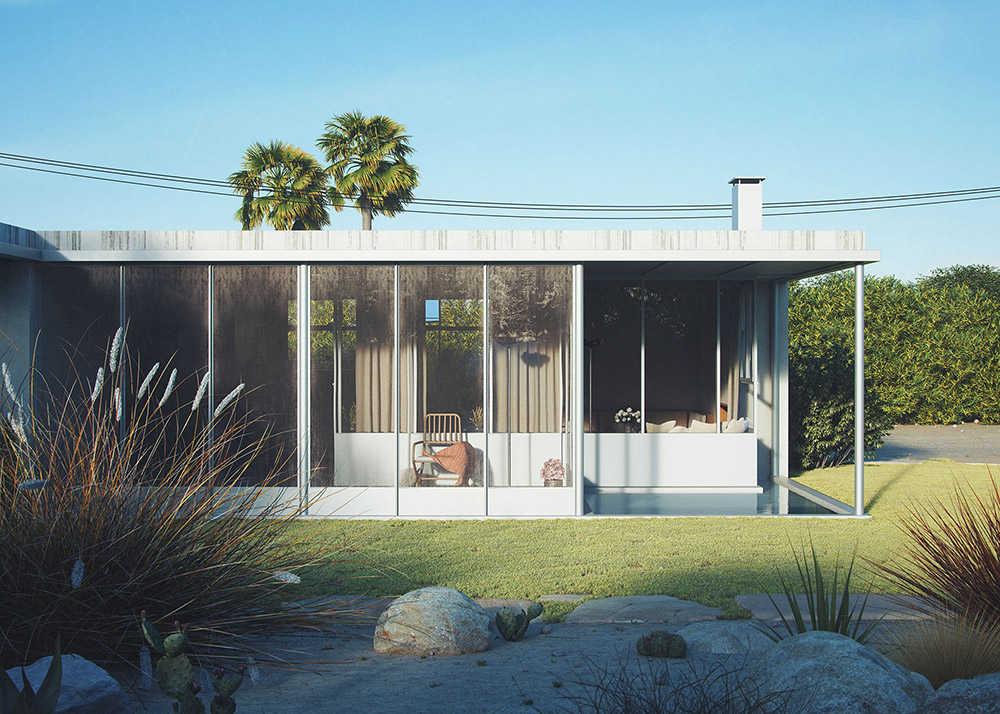
Originally posted on VWArtclub
Software used: Cinema 4D, Vray, Photoshop
Introduction
It all began while reading a book about Richard Neutra's designs. Particularly the Miller House, as photographed by Julius Shulman, caught my attention due to several reasons. It was not the most spectacular or expensive house but not less interesting either. Built in the desert in Palm Springs (CA) in the 1930ies, the house went through some changes/adaptions over the years. Abandoned by the original owners, it was even used as a crack den by locals at times, and the condition deteriorated until new owners commissioned thorough restorations. For more background, here's a nice article from the current owner: www.bassamfellows.com/entry.html?id=70However, I thought this house would be a perfect challenge to recreate it in 3d. And use it as a project to refine rendering techniques. I decided to make images from the house as it could look like today, if it were preserved in its original state. And I wanted to be able to take images from different angles, so I knew I had to build the complete environment in 3d.
References
As always, it's crucial to get as much references as possible. It wasn't very easy, because there's not as much information about this house as there is for other houses by Neutra. I put most of my attention to the few original photos taken by Julius Shulman.
And here is what I found on the internet.

Modeling
That was the easiest part in this project. As this is not a modeling tutorial, I won't go into every detail. To model the house, I used the floor plan, that I found on the internet, put it on a plane and painted polygons with the polygon pen tool for the walls on top of it. Then it was just a matter of extruding.

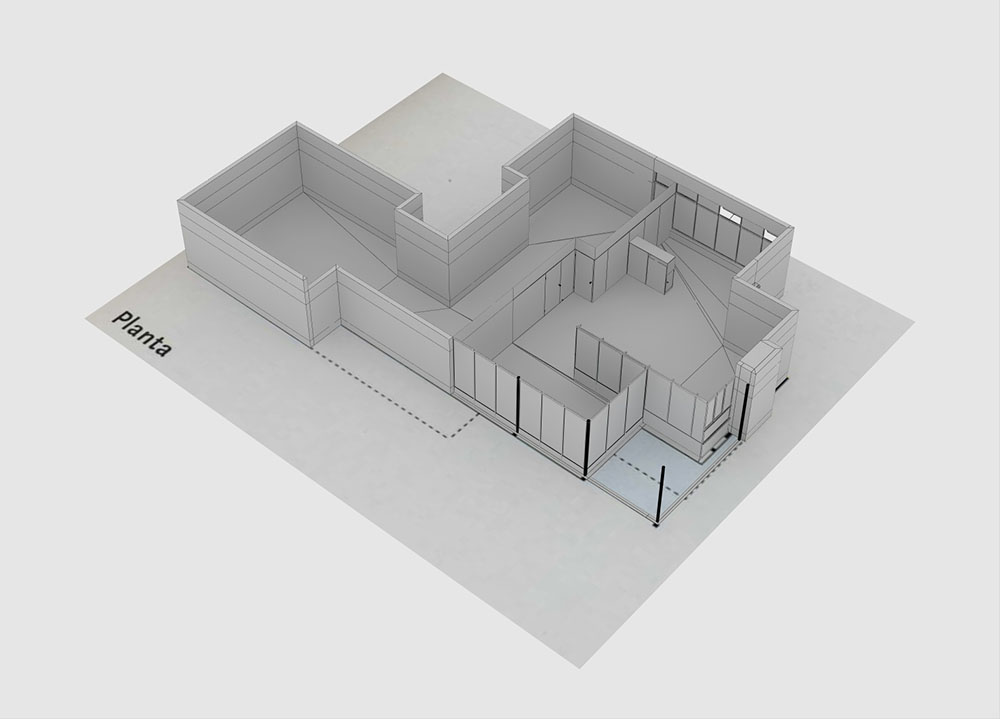
Most of the interior assets I took from my library, although almost every object needed to be adapted. As I tried to match the original furniture from the 1930s, and objects from that era are difficult to find, I had to model a lot myself. Yet, the modeling was basic, so no secrets here. Just good old manual poly modeling.
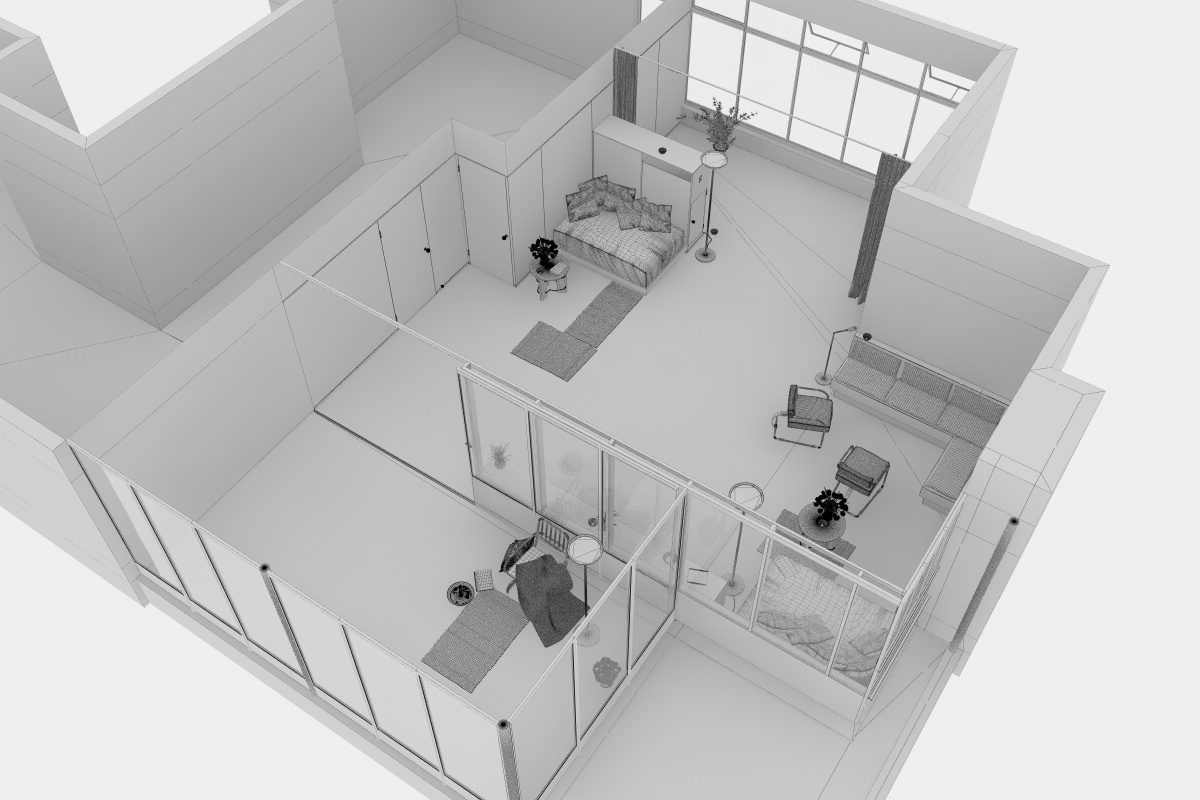
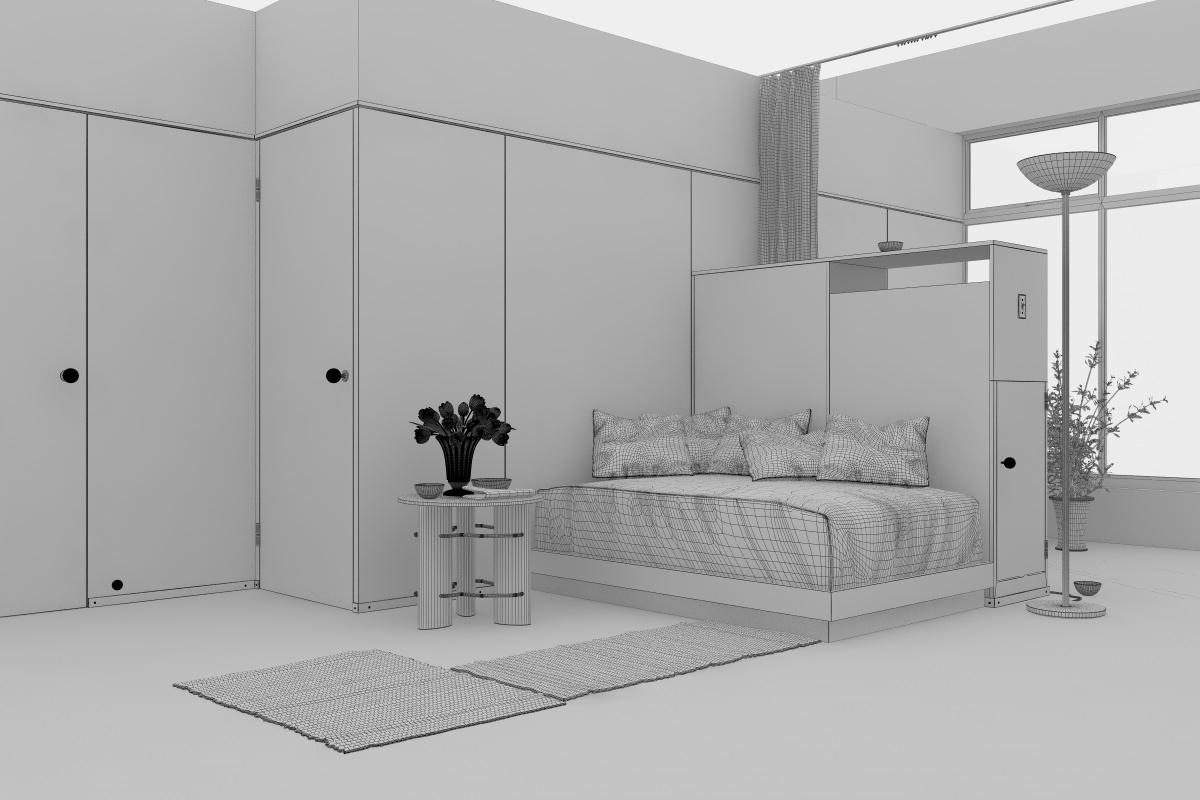
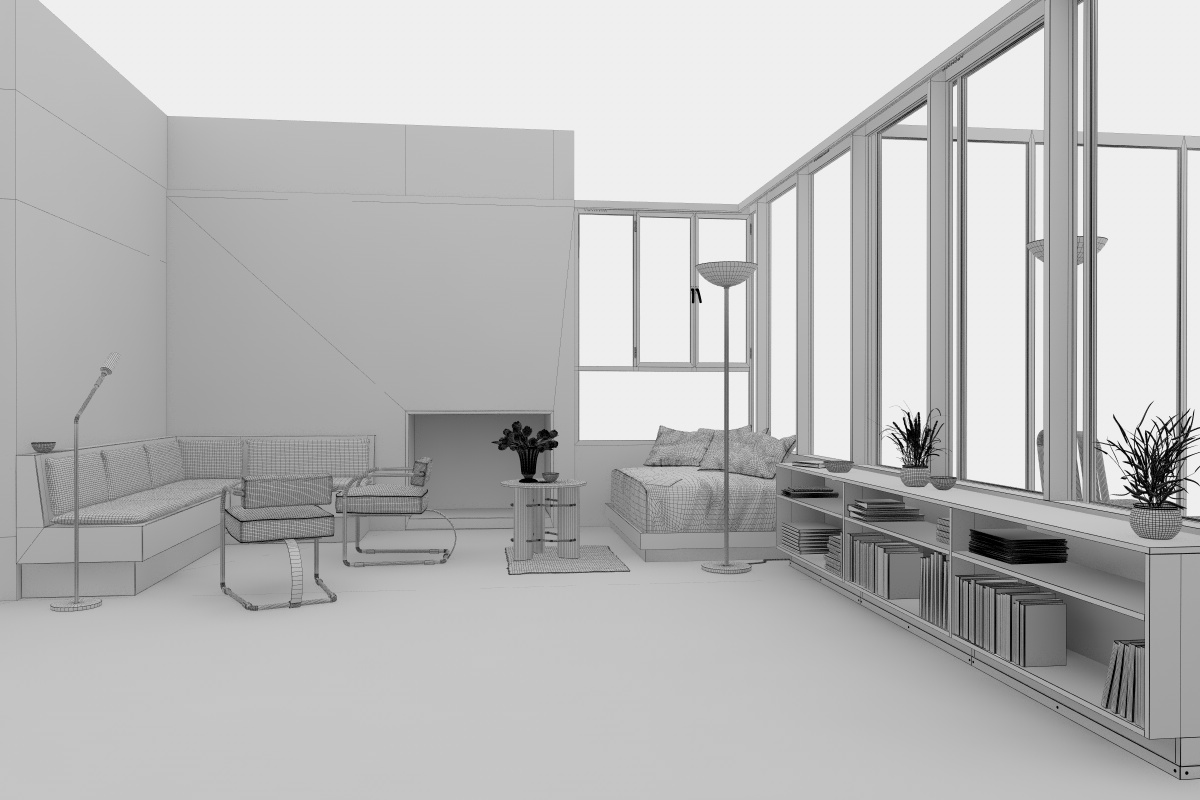
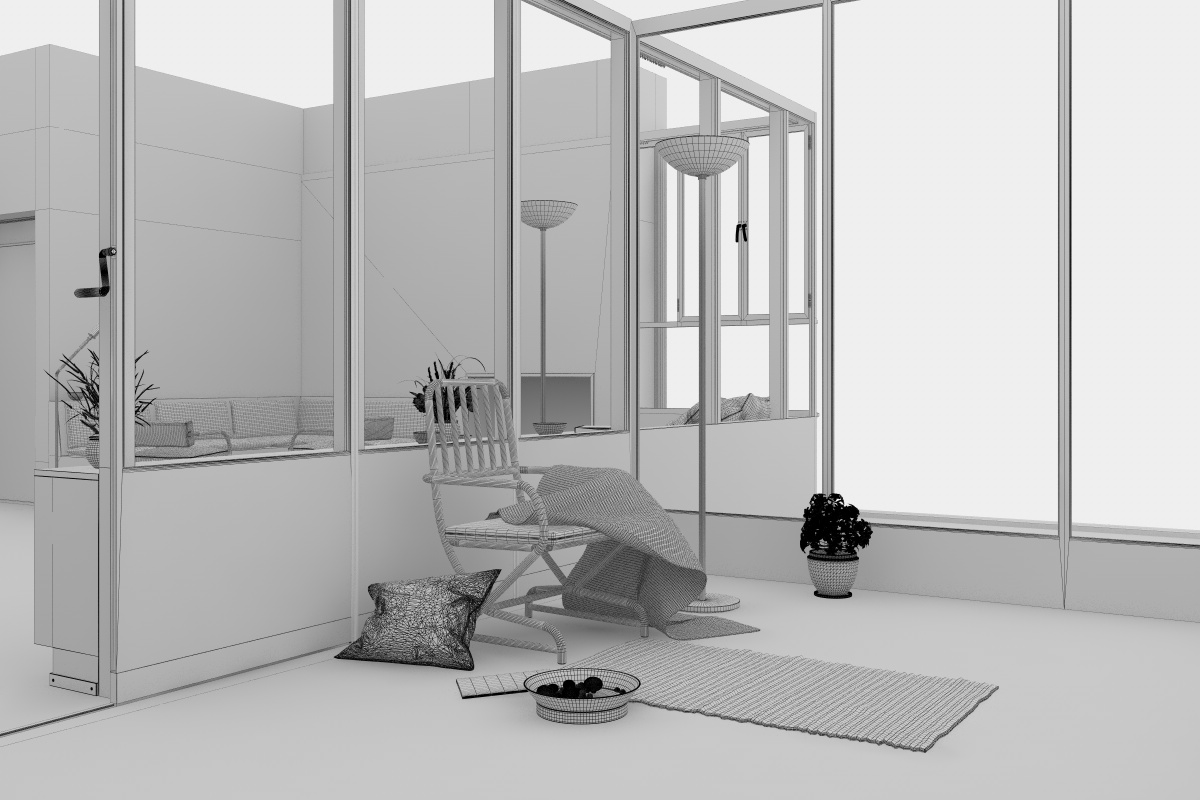
The terrain, surrounded by a wall, is created with a highly subdivided plane. Adjusted manually to match the original heights.
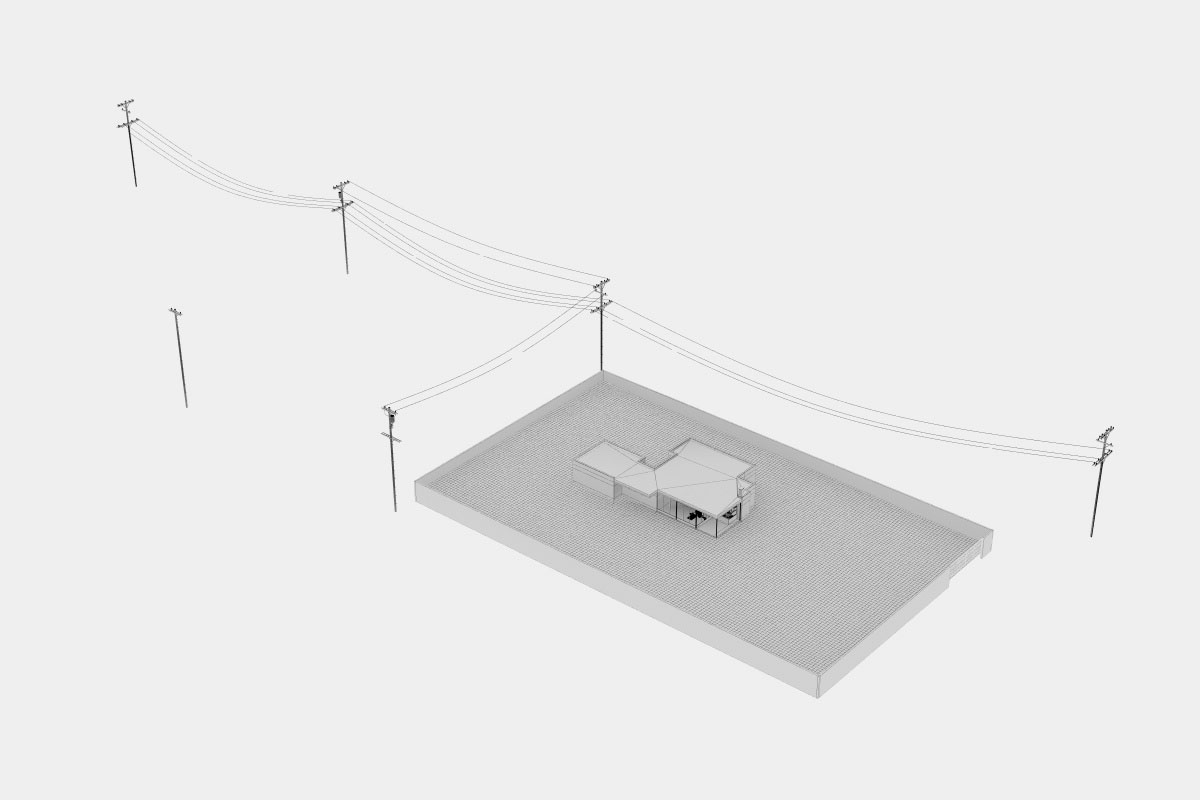
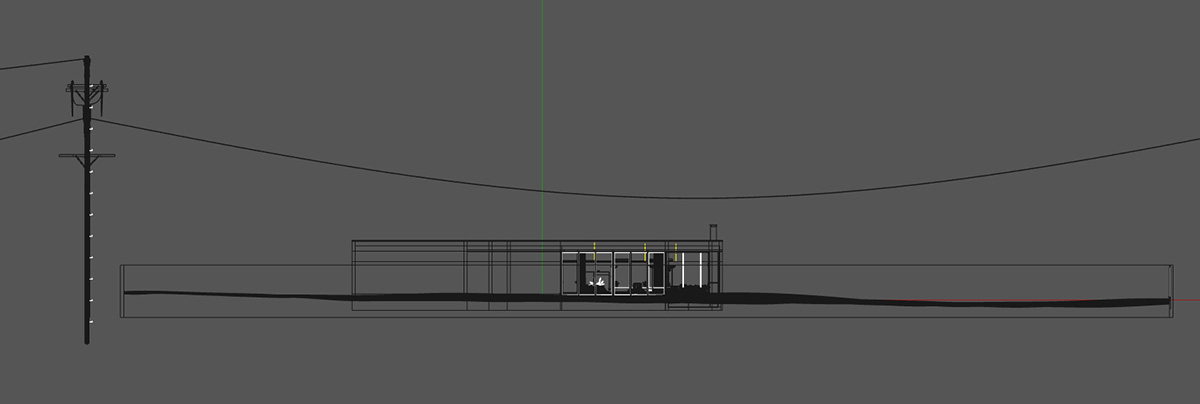
Materials
I always try to keep the materials as simple as possible. I'm trying not to over-complicate it with unnecessary layers, filters and other things. I try to not use color saturation or values at 100%. Extremes are usually not happening in the real world, and thus look out of place. But I do try to use high-res bitmaps from photographs where ever possible. After all, what looks more real than picture of something real?Often one of the materials that has a huge impact on the scene, is rather simple to make; the floor.

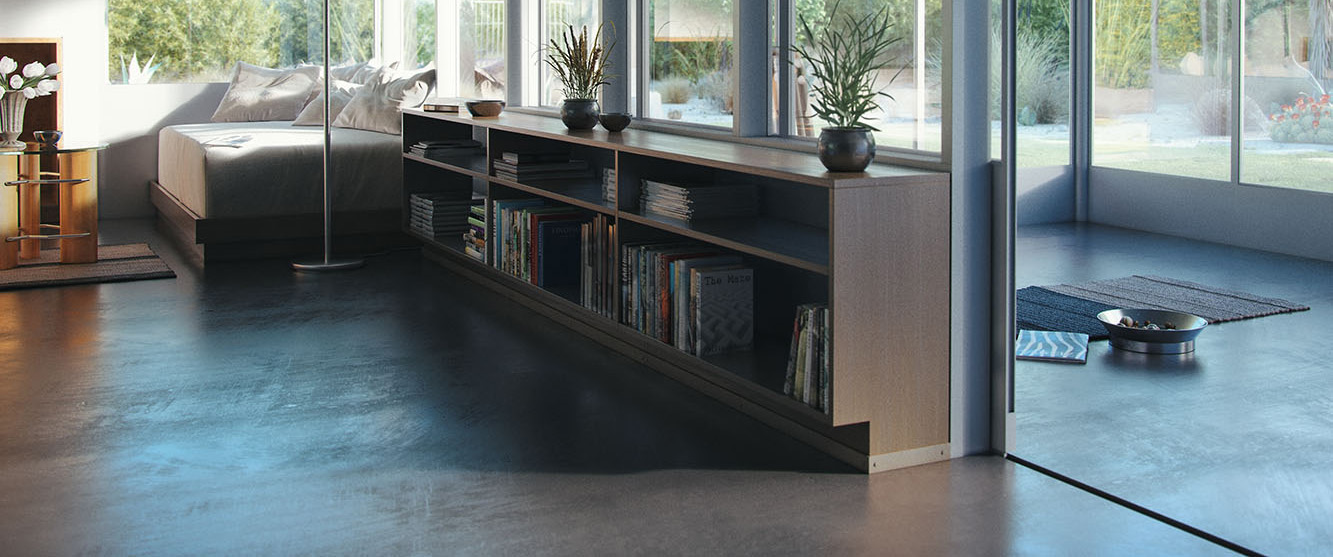
Most of the Materials are built up the same way. As an example, here's a wooden material:
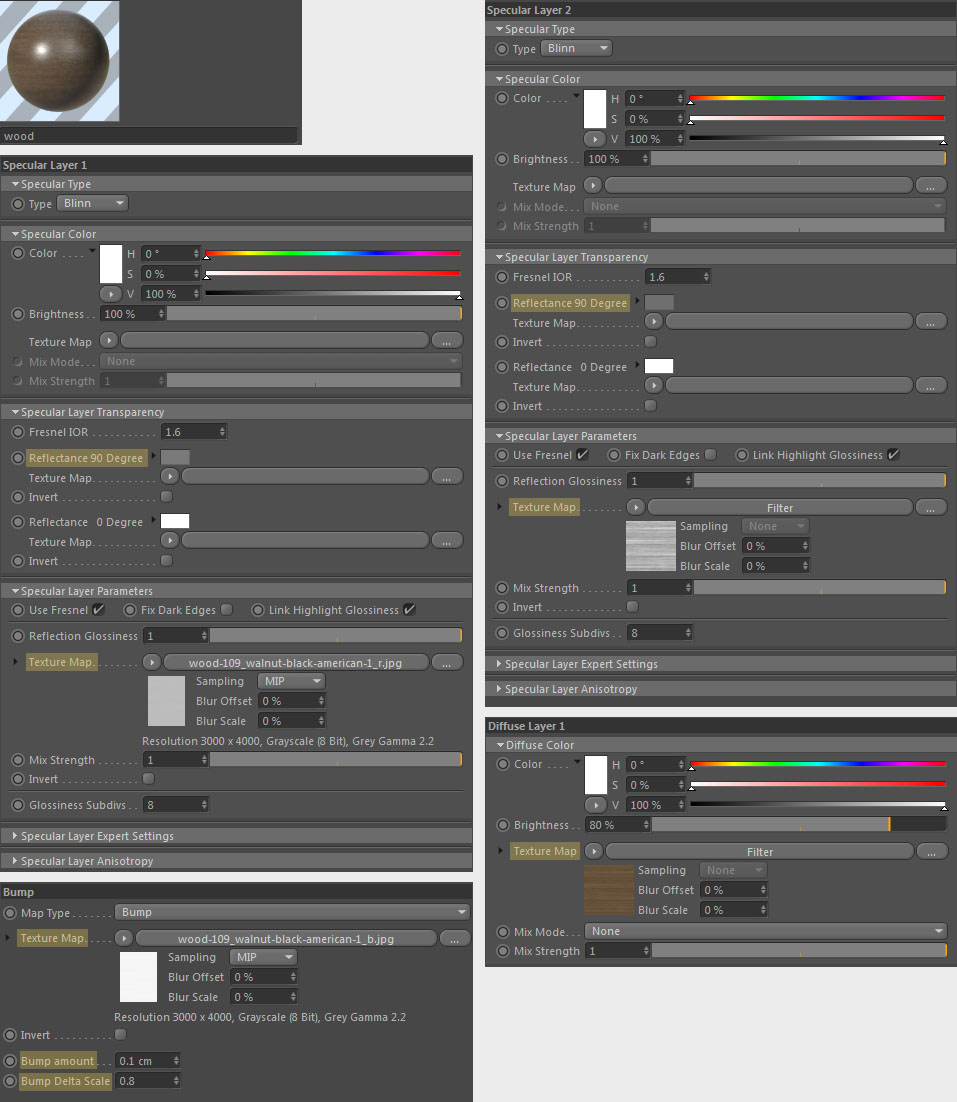
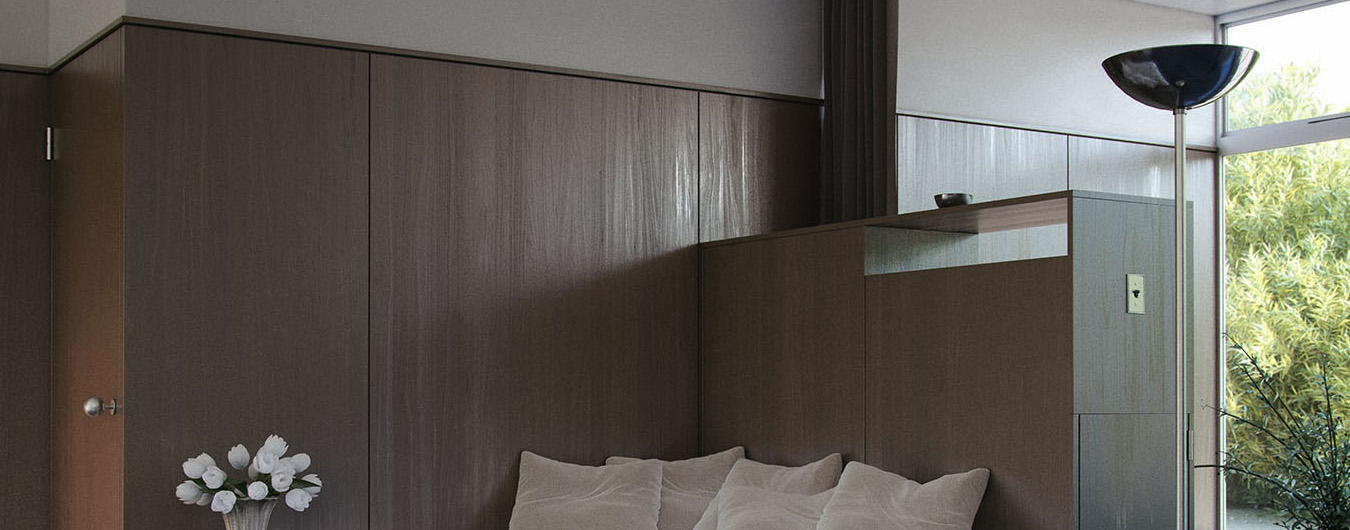
For the windows, I started with a glass material and iteratively added dirt and/or lessened transparency to create a variety of materials. Applying them to individual windows, to make one look dirtier, i.e. less transparent, than the other, as would befit reality, where some windows are exposed to elements more than others. This is how the dirtiest was composed:
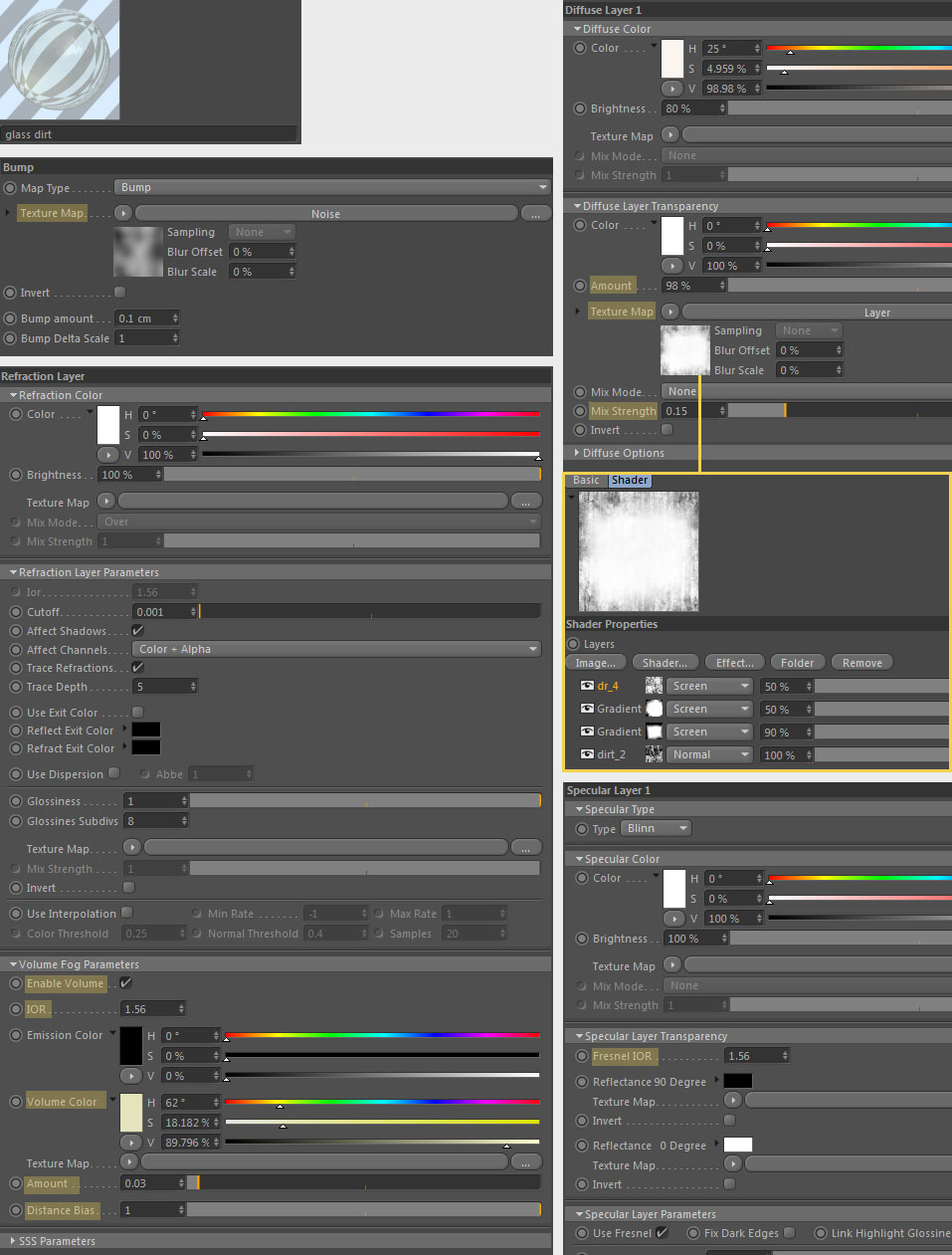
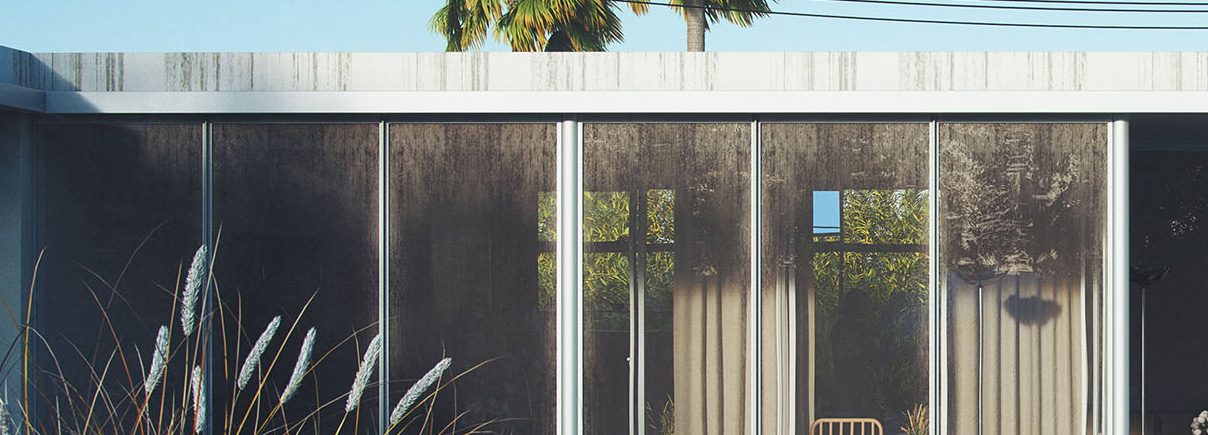
Never neglect to add a slight bump to the glass, as no glass in real world is 100% straight. Trivia: very old windows in churches for example are measurably thicker at the bottom than on top, because the glass flows down over the centuries. Small imperfections add a lot to realism. Straight lines behind a window glass should not appear perfectly straight e.g. but, as always, don't overdo it, if you just barely notice the effect in the scene, then it's just right.
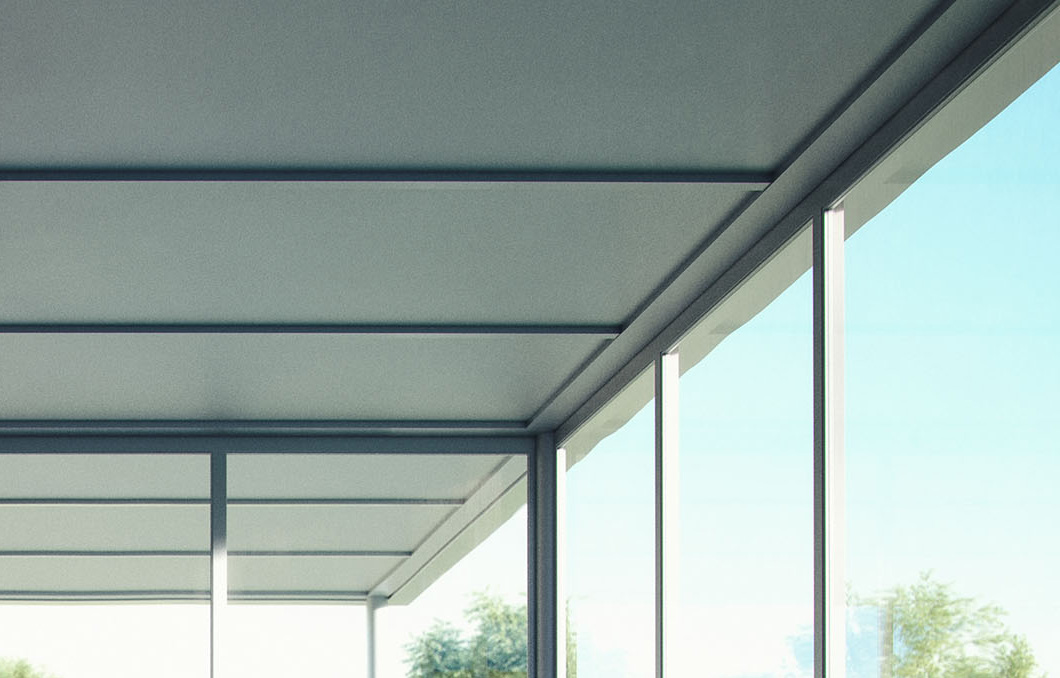
The terrain consists of 2 different textures, one for the grass and one for the caked desert-ish dirt, their placement defined by a vertex map.
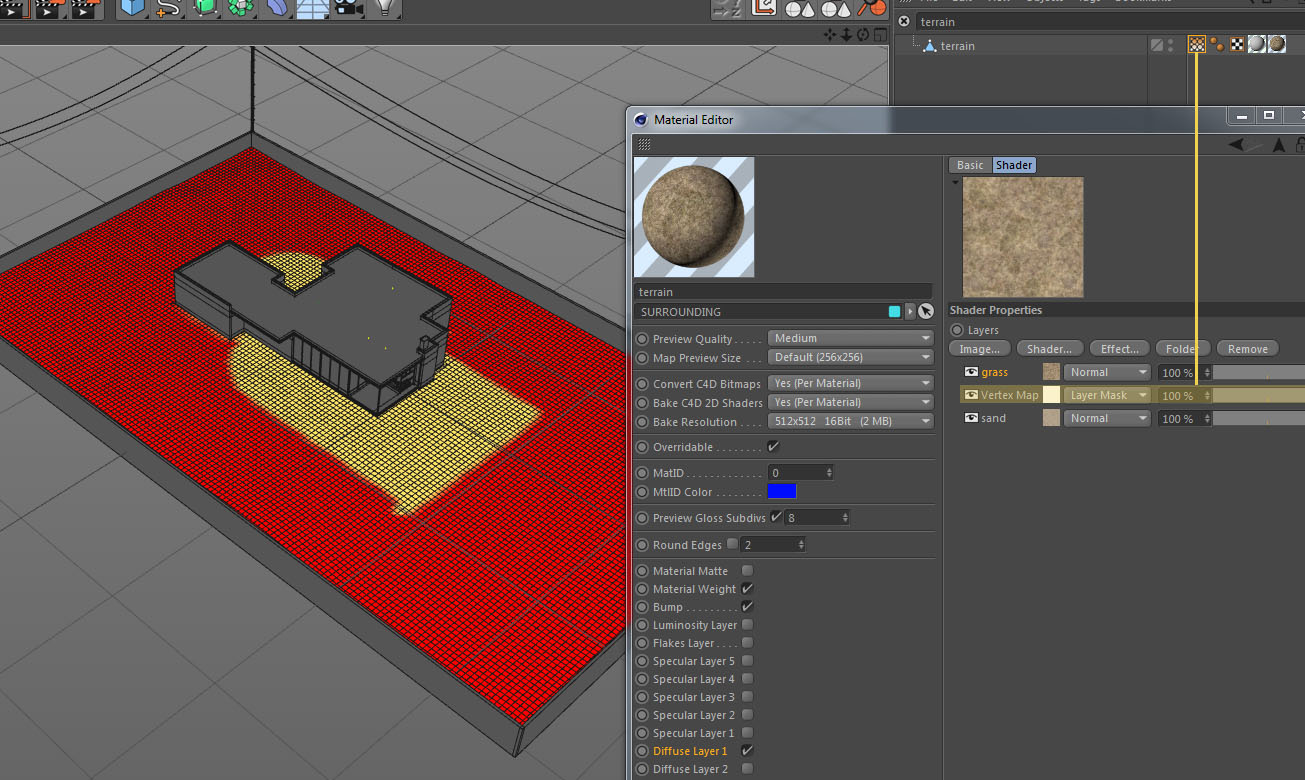
Car tracks were added with a displacement map, which I created in photoshop. The displacement material was placed just before the terrain material. Like this, displacement and terrain will bake together and you don't have to activate mix texture.
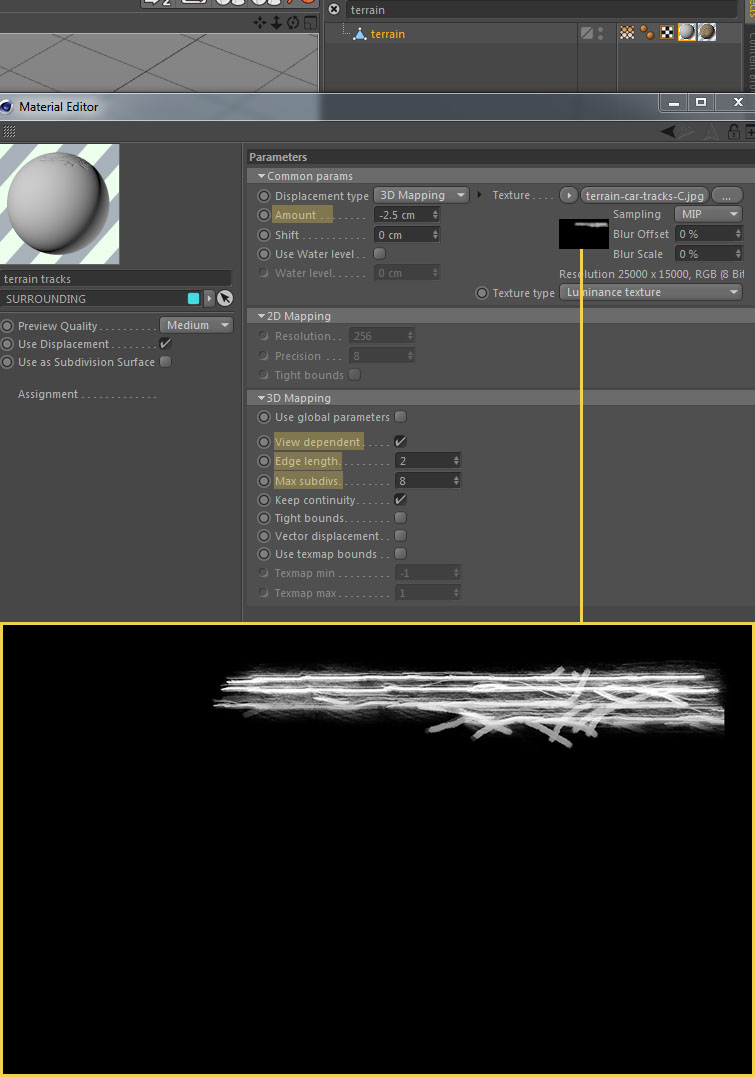
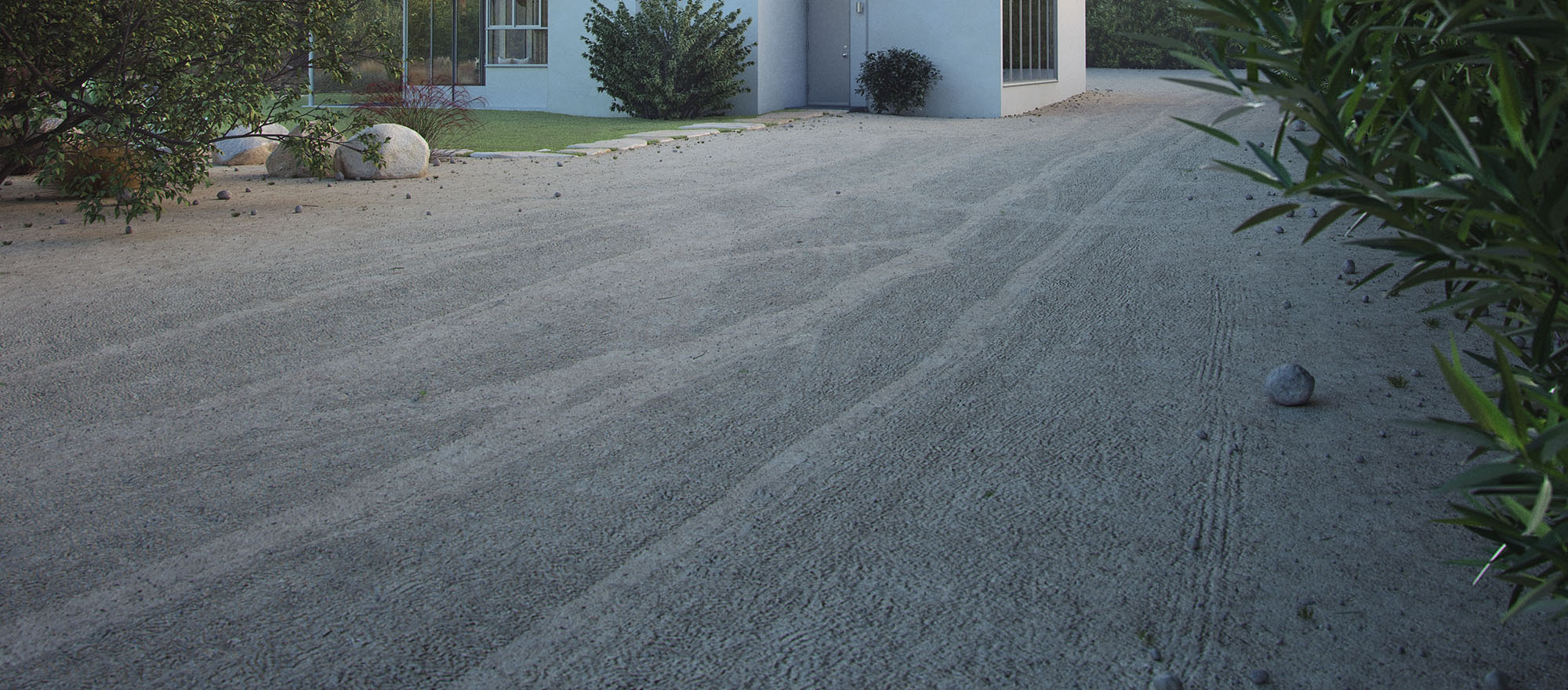
Vegetation
The lusher parts of the environment were definitely the biggest challenge. I find vegetation is usually the first tell where you can see if it's a 3d render or a photograph. Therefore, I invested by far the most time into that part of the scene. I was also simply not ever satisfied with the quality. There's still parts that should be better, but one must find an end, eventually.To start this chapter, I will introduce you to the worst part of the project, which in hindsight I would not approach the same way again. The scene background. Those mountains were created with a simple plane, about 16km square in size, then displaced using a large-scale texture in a displacer object.

The advantage of this is that I really had a 3d mountain in my scene. Allowing me to move the camera around and the perspective would always be correct even in the background. Plus of course I had a real-time preview of where exactly the peaks would come to be in the picture composition. I could have used backplates, but would have had to adjust them for every single camera. The cheapest way would have been to fix all that in post naturally, but in terms of “continuity” it would be difficult. The question is if anyone would ever notice, but since this was a personal project and not a for profit project, why go cheap. In fact, next time I would like to actually model the mountain, with real 3d trees and boulders and so on.
As a result of the detailed vegetation, the environment consists of around 2 million objects and 113 million polygons. Most of them were included as xrefs or proxies, so that my computer was able to manage them. Then, distributed manually or with the mograph object.
For the stone walkway, I've used vizpark Real Boulders models, and sliced them into individual slabs, much like a mason would. Using that method, I ended up with 13 different slabs of stone which I then duplicated several times while changing scale. Until I had 55 unique models. I then placed them manually into the scene. Much like the mason's assistant would.


For the grass, I've used models from vizpark Real Grass, that I tweaked a bit to fit my needs. I duplicated the terrain plane, deleted all polygons where no grass was supposed to grow and cut out the parts out where the rocks/sidewalk are.

Using this plane, it was a simple task to distribute the grass models. With mograph in the object mode, just drag and drop the grass plane in the object slot. Don't forget to tick Render Instances, I'm not sure how this is possible, but with this option cinema doesn't calculate every object in the editor window, even though it will display all? Anyway, it makes it possible for cinema to display thousands of objects without suffering performance impacts. I changed the distribution to surface and used selection tags to limit the distribution at some parts. Doing this several times you get a natural looking lawn with various grasses, and weeds.
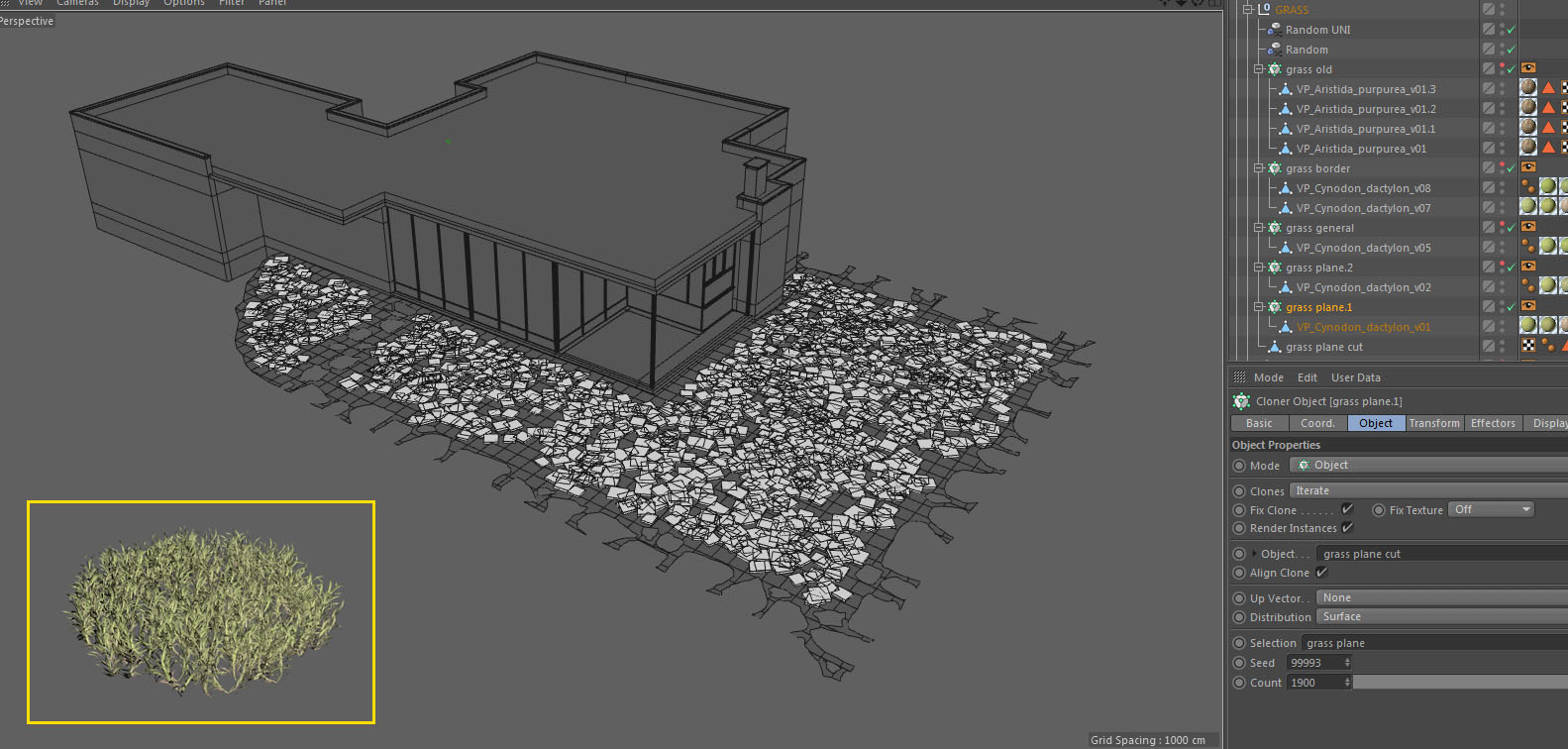
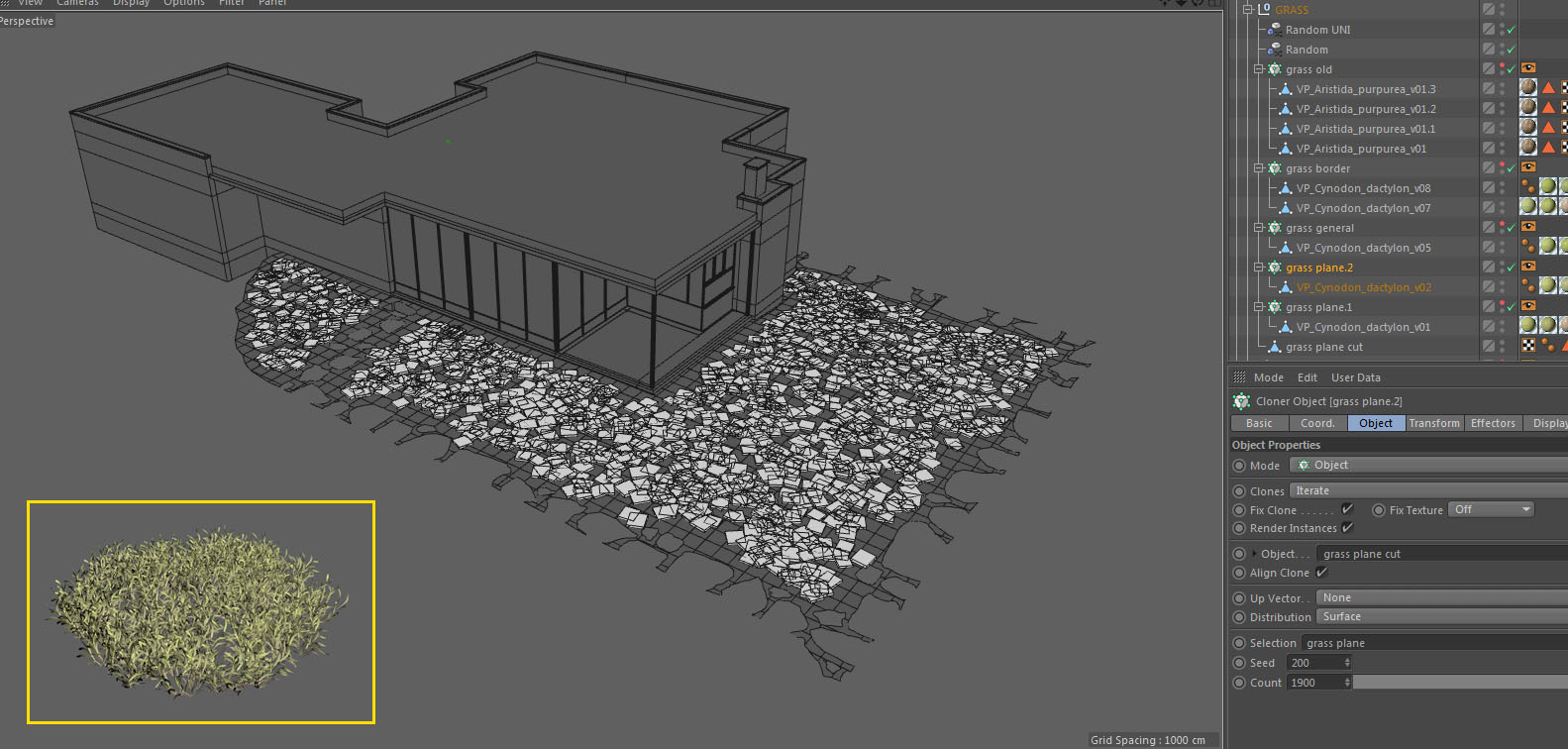
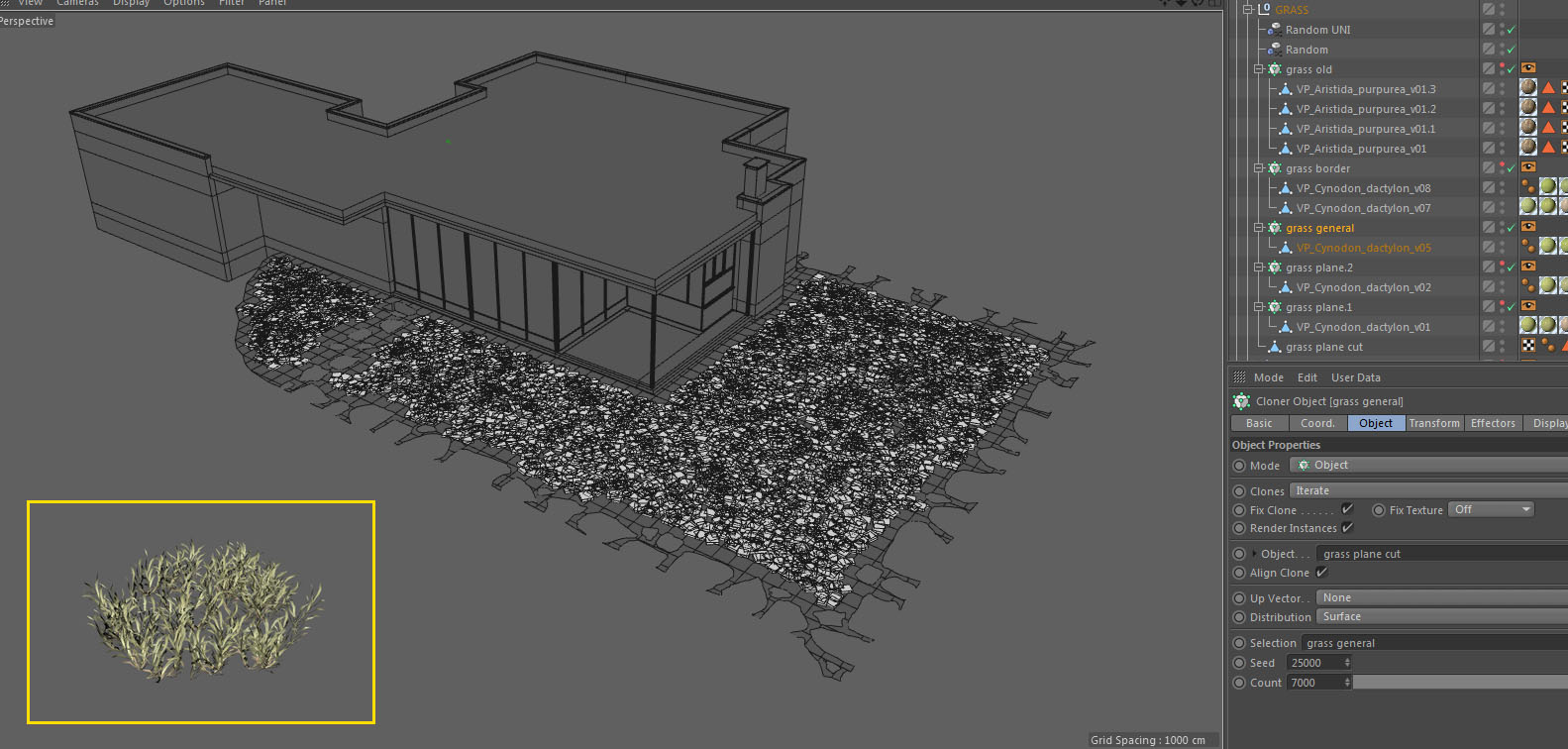
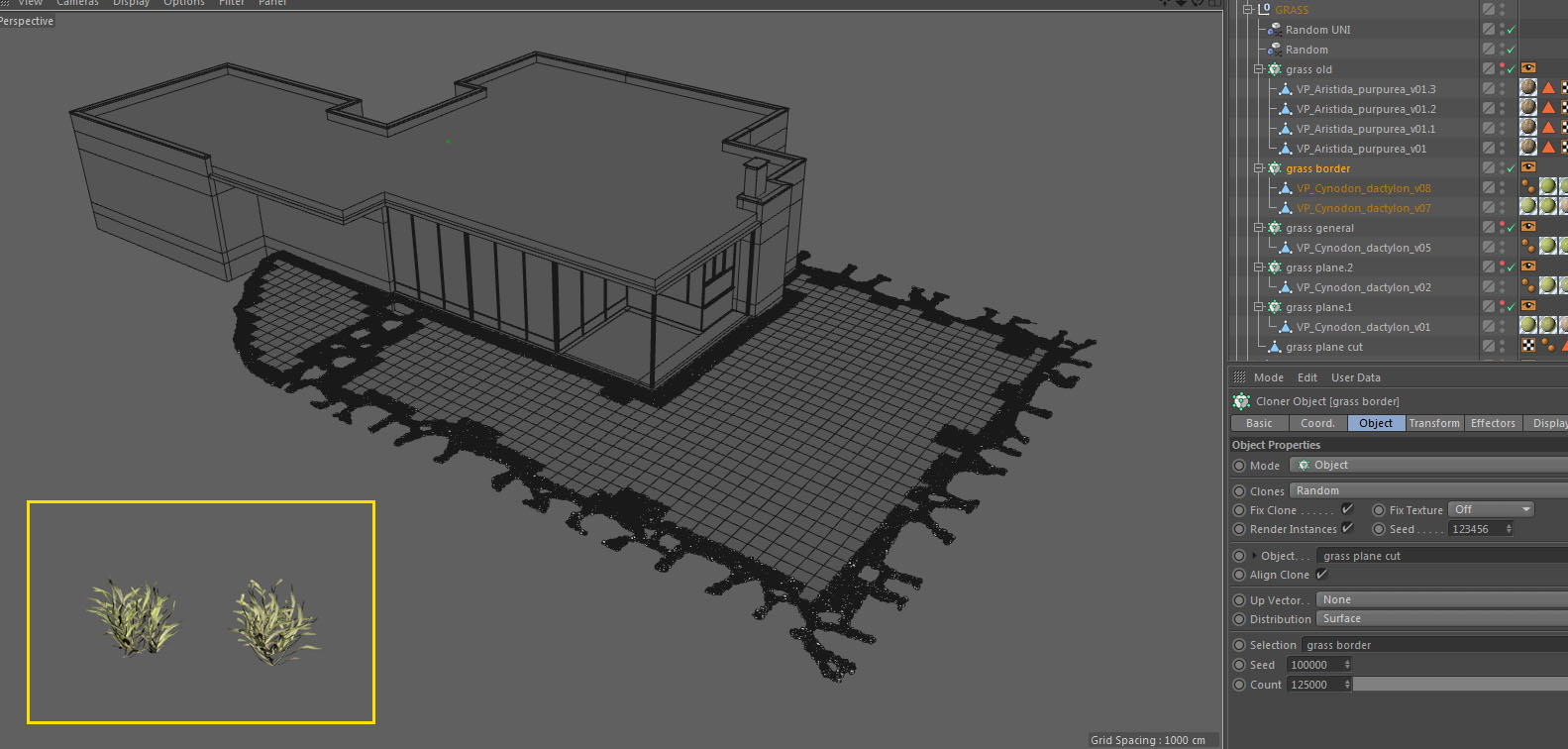
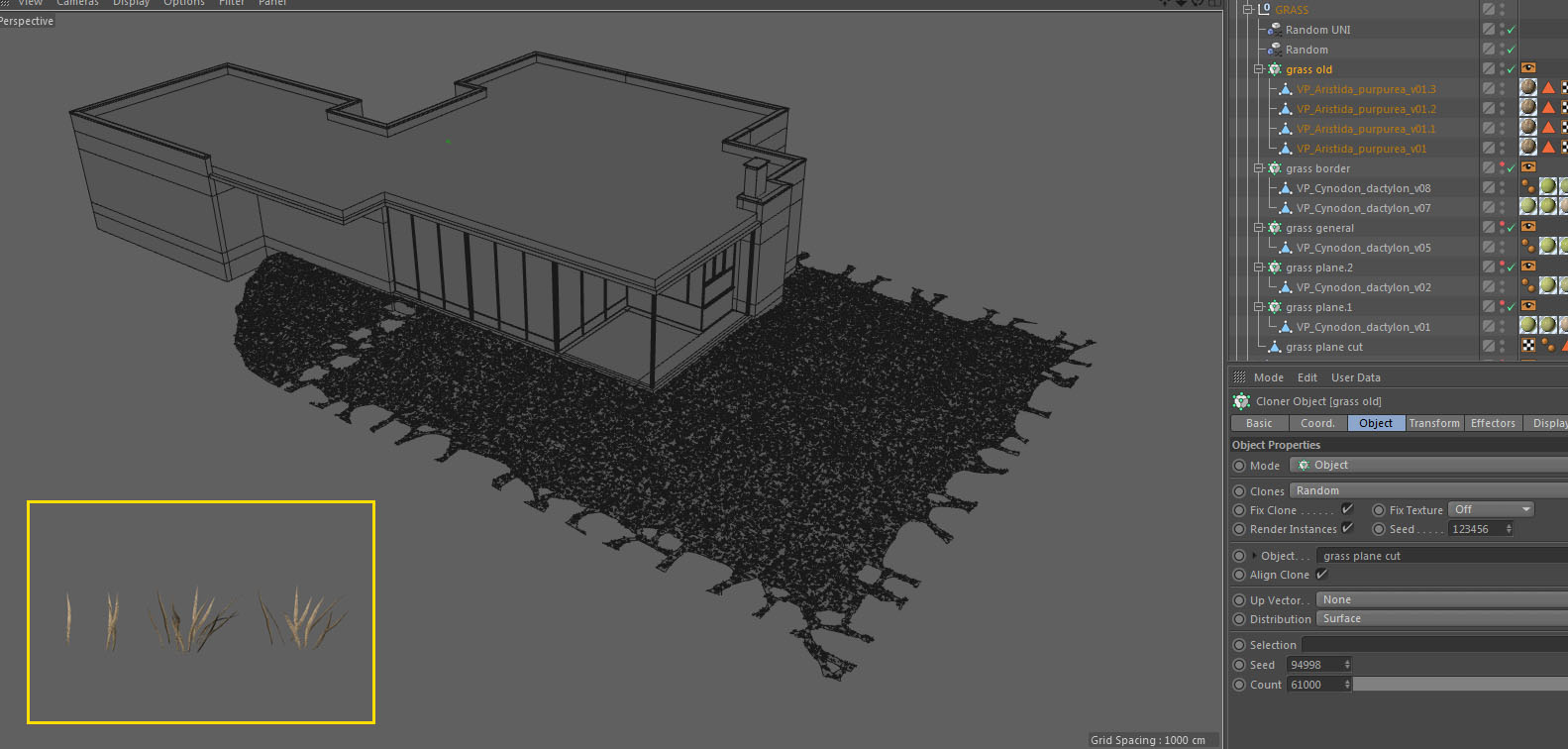
Every mograph object connects to two random objects, to achieve variations in scale and rotation for the various instances of the same root grass model.
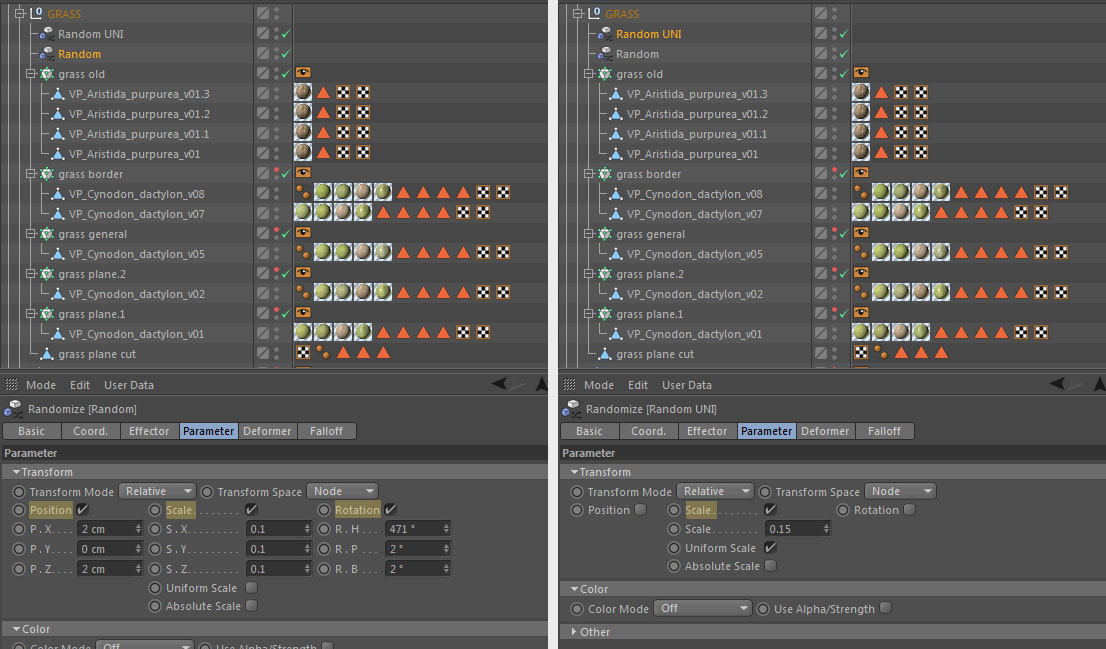
For the garden, namely cacti, plants, bushes, rocks and small trees I've used the same principles. Spread the lot with mograph and place some manually to break patterns and add details, large or small, where needed. I've used some vizpark, evermotion, hq-plants, cgtrader, turbosquid and other models I've collected over the years. There's so many that it won't make sense to name them all separately.
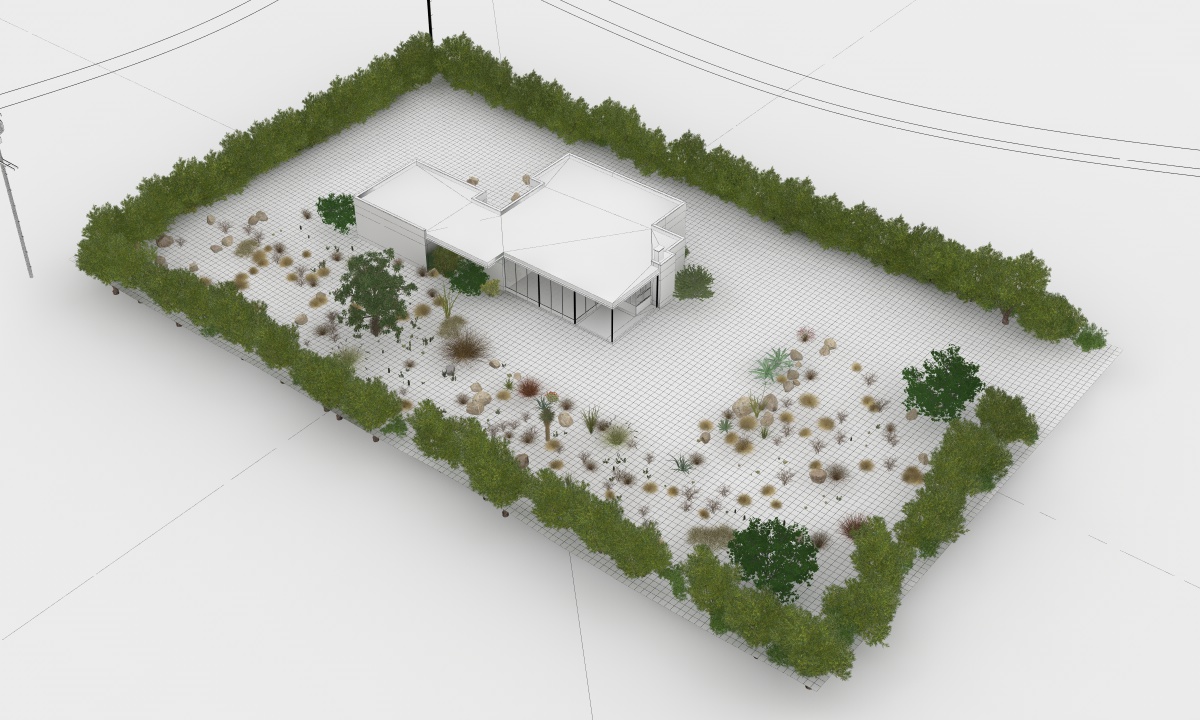
Another very important thing is to add small details and imperfections everywhere. Dirt, pebbles, grass blades and so on. I distributed them all over the place with the same technique.
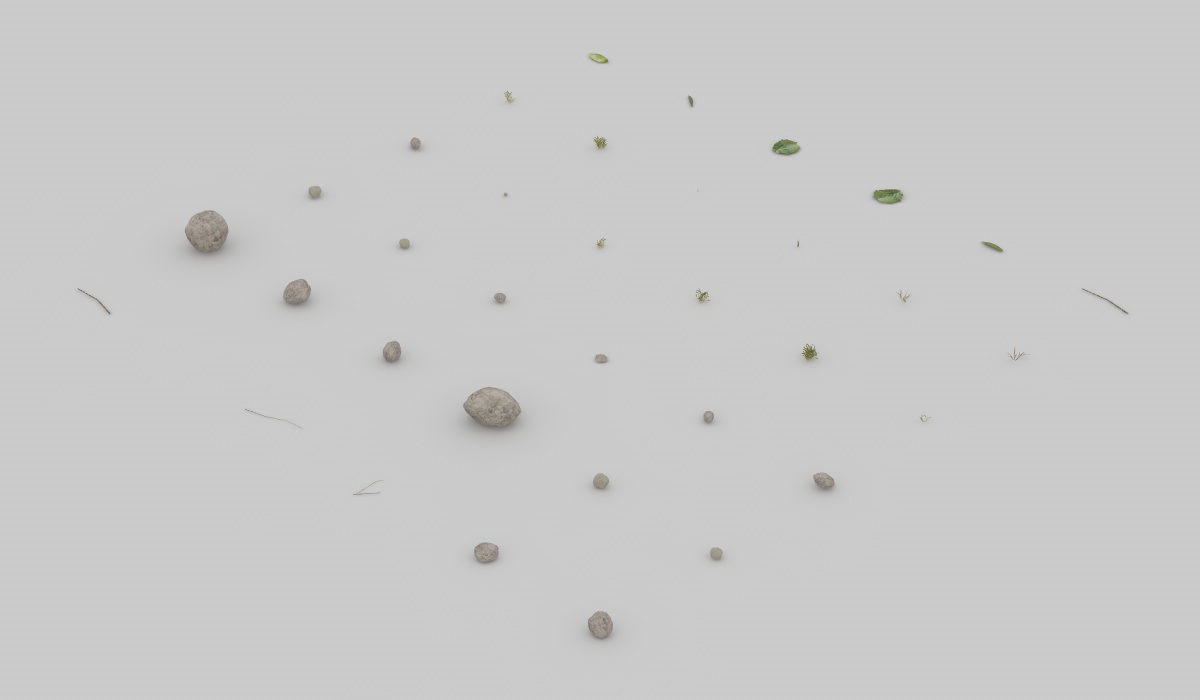
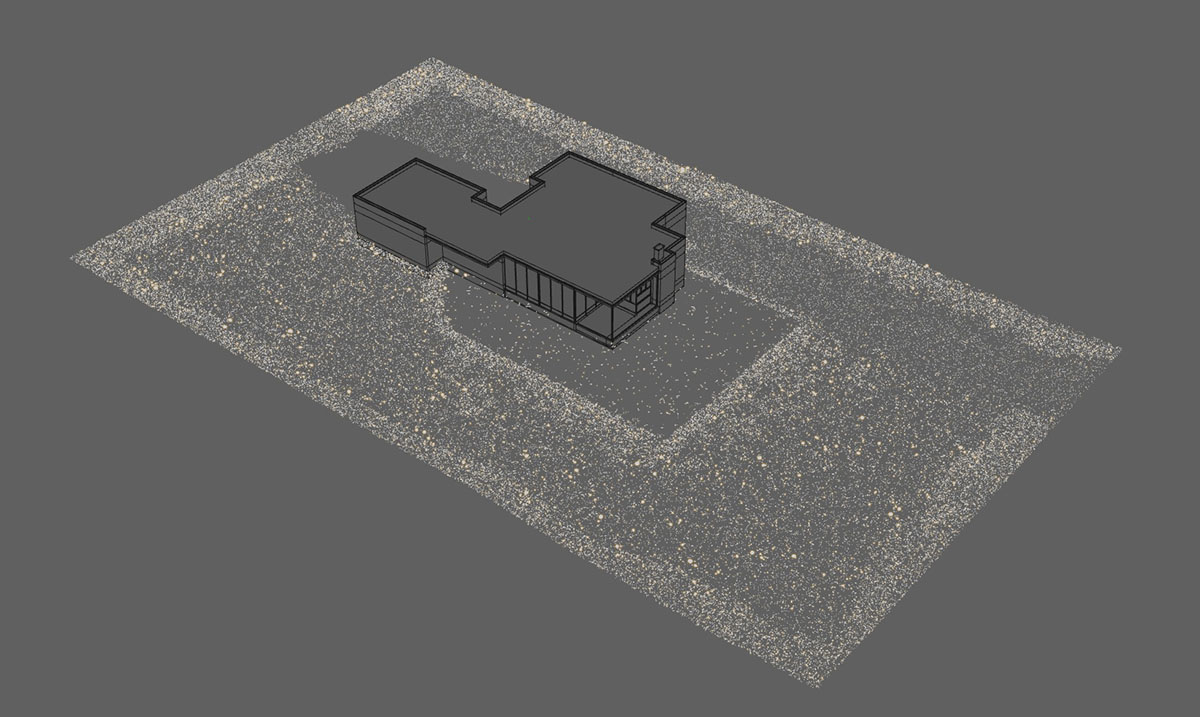
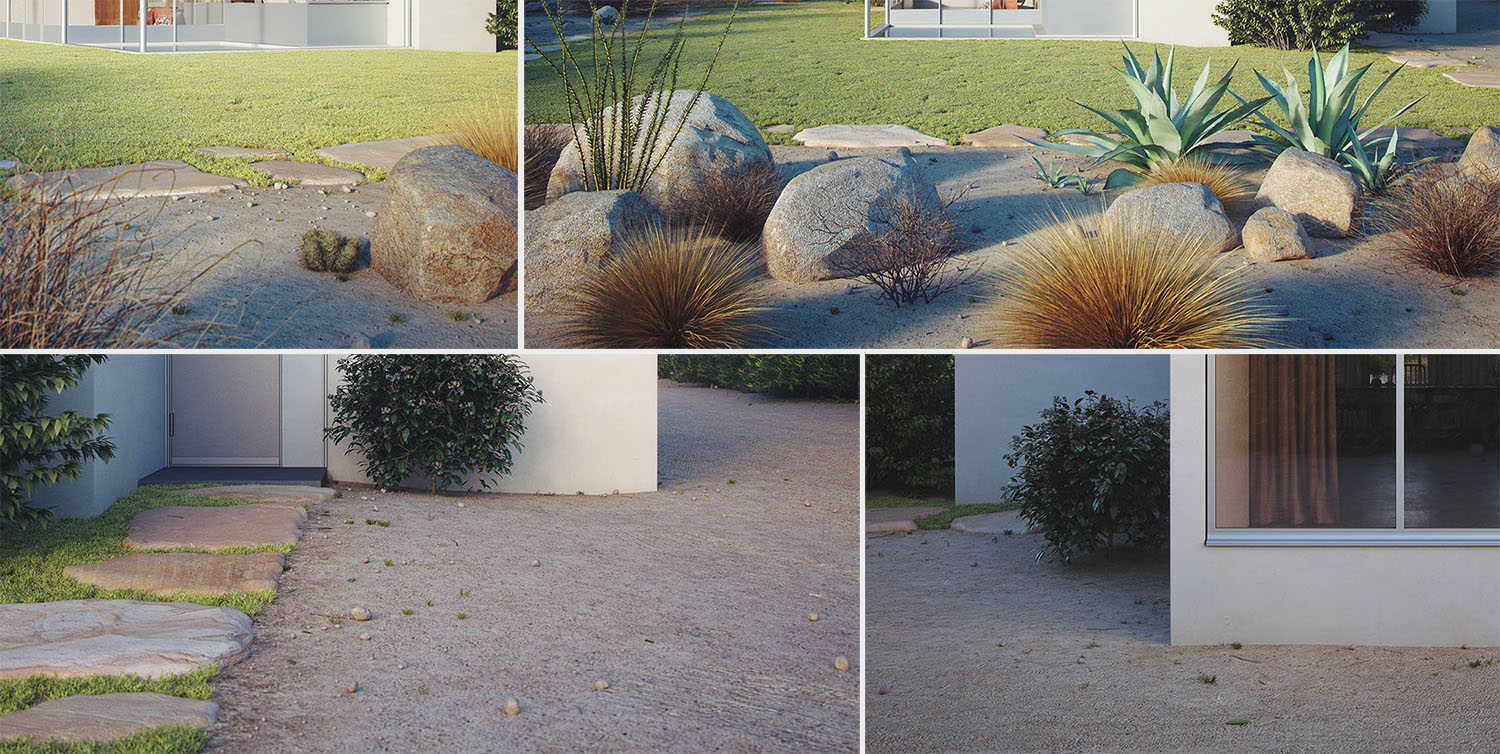
The background trees were positioned manually.
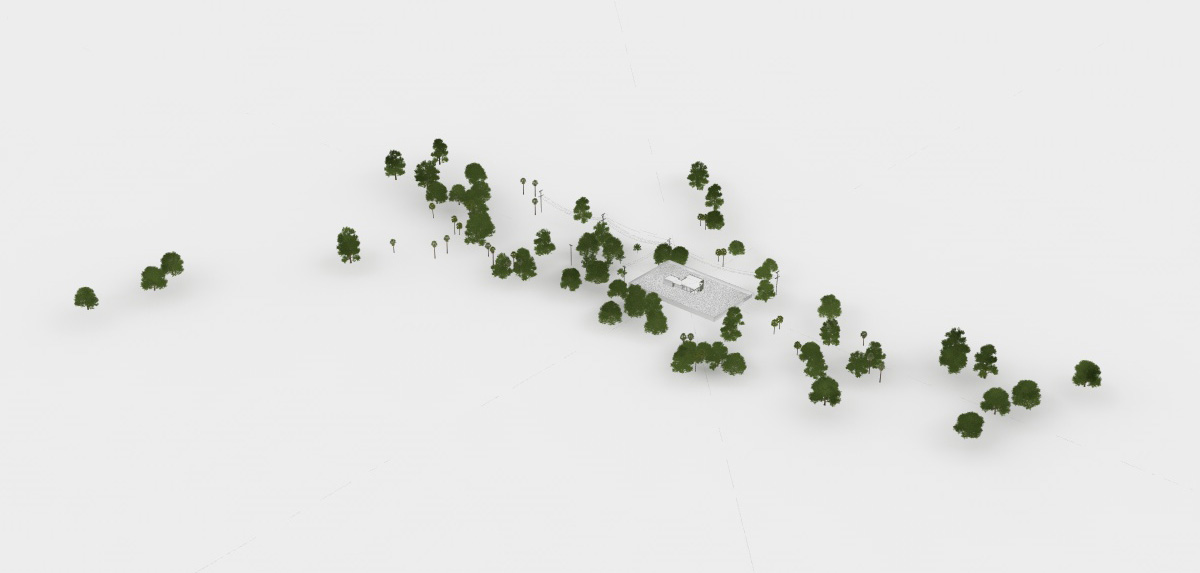
Setup
The good thing about all the previous work was that I now had a complete scene with no gaps. Allowing me to place cameras wherever I wanted. Just like a real photographer on site. I was surely influenced by the existing image compositions, but having the entire scene available also encouraged me to look around and find unexpected interesting compositions.I ended up with 18 different camera setups. For the lighting, I used exclusively HDRIs, since I rendered only daylight scenes, there was no need for additional lights. In total I used 3 different HDRIs, one from Peter Guthrie and two from vizpark. The HDRIs where adjusted in rotation and intensity to every specific camera setup.

These are the camera setting for this particular shot. They are very similar to the settings for the other cameras. With slightly different values for f-stop and shutter speed. I always activate dof, even though the effect is subtle and it will render much longer, I think the quality is far better than doing it in post-production.
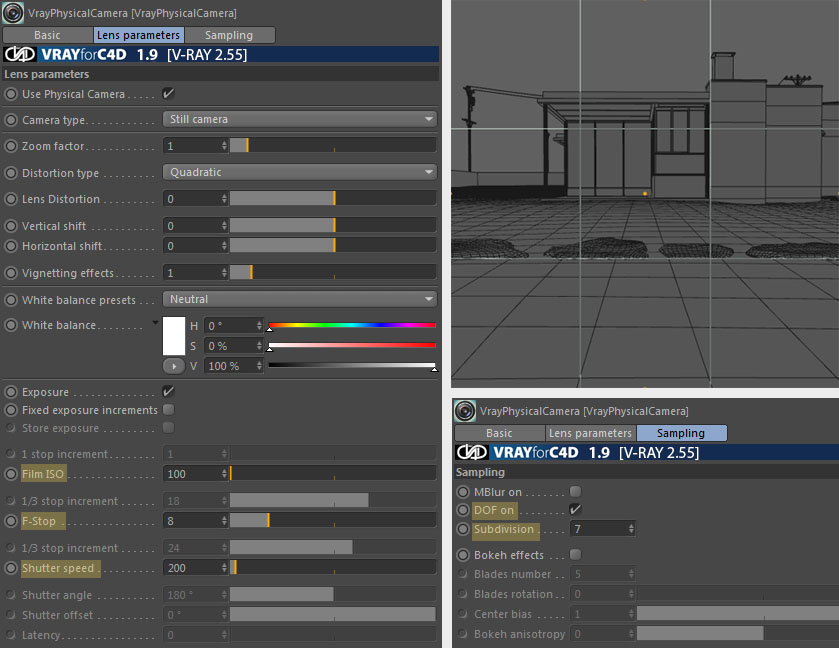
And here's the dome light settings for the same shot. Here too, settings are pretty much equal all setups, with slight differences in intensity and gamma.
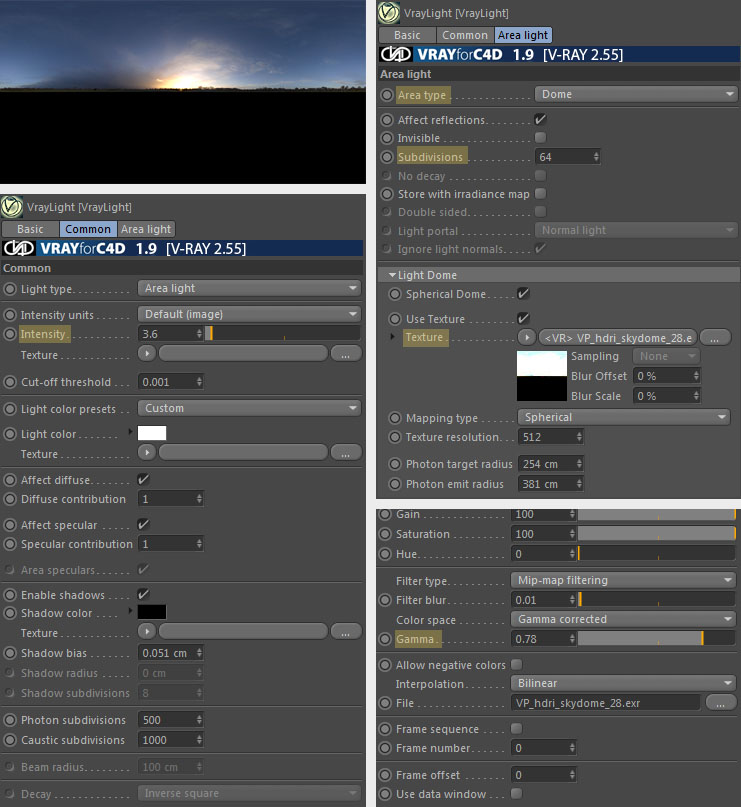
The render settings were the exact same for every shot.
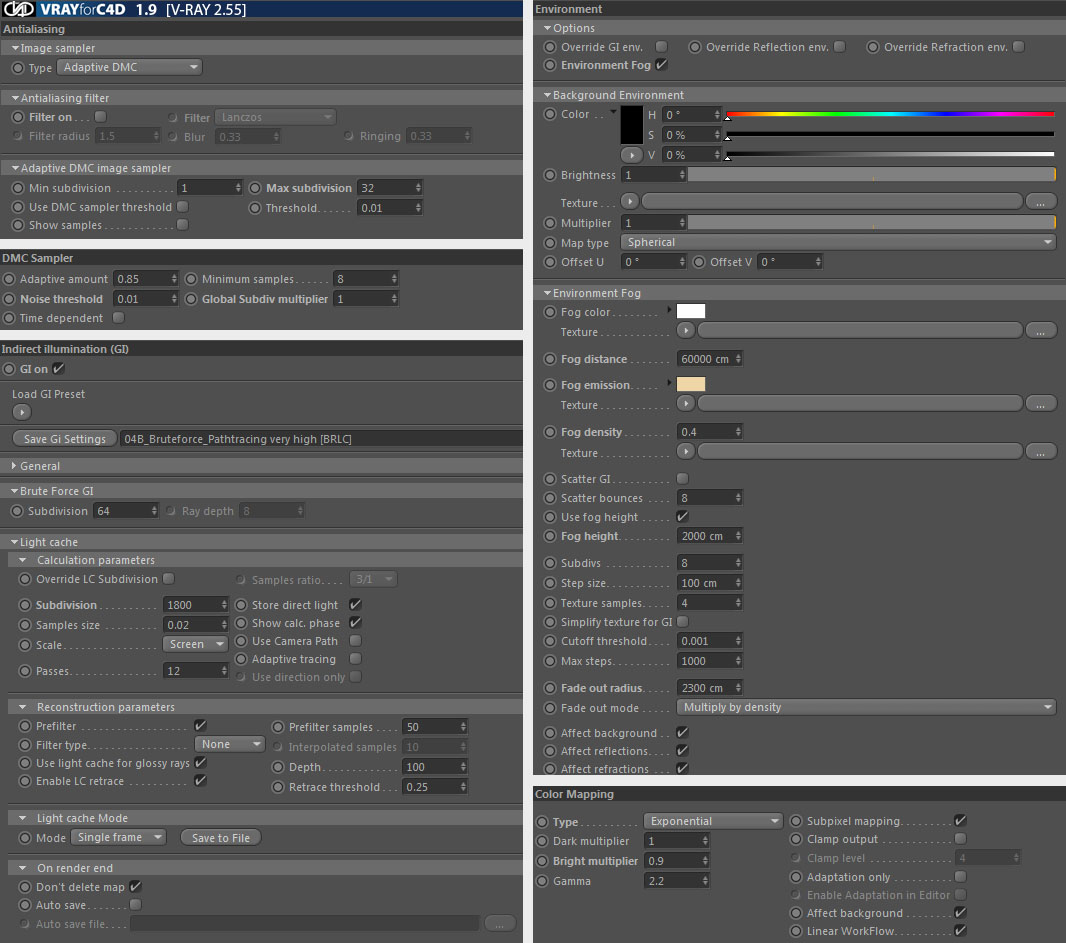
The final renderings were saved as 16 bit tiff files, with a maximum size of 4000 pixels, along with some basic additional passes.
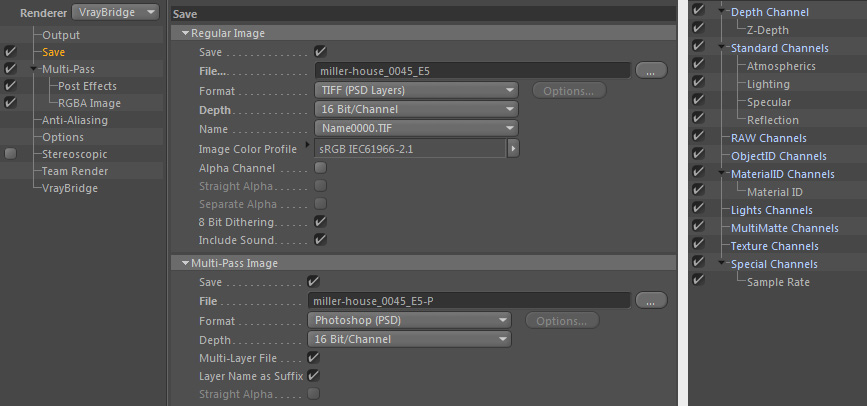
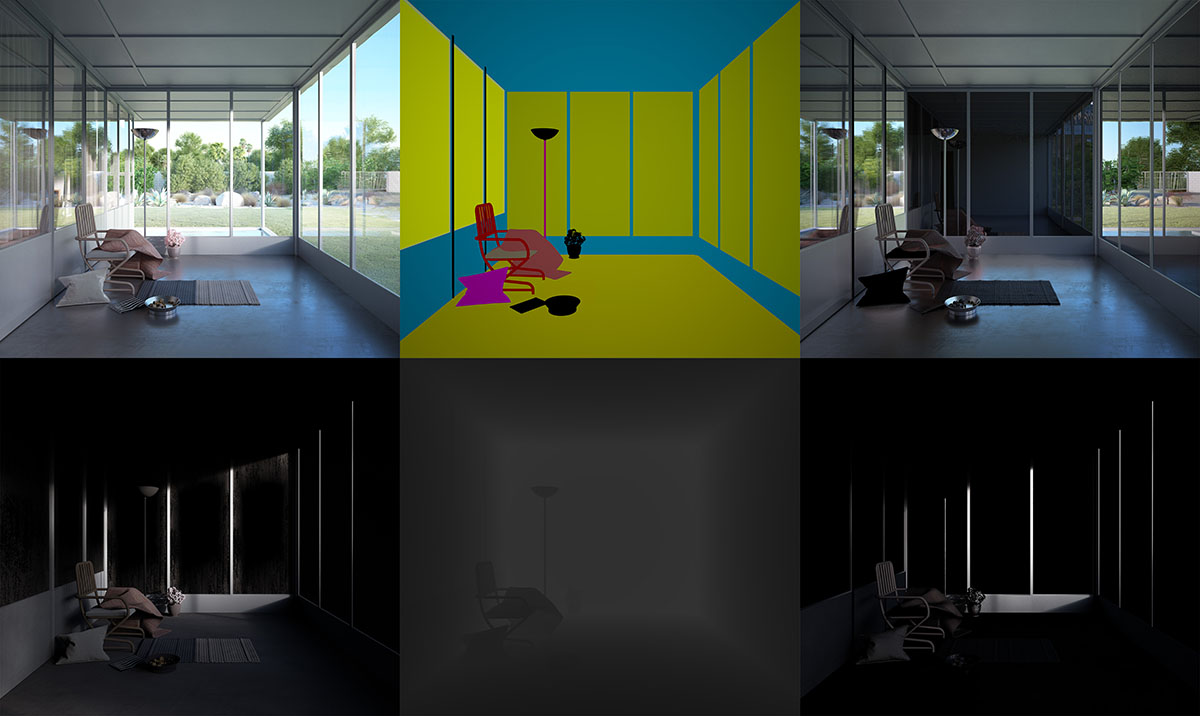
Post work
As a matter of fact, because I'm using exponential color mapping, the raw renders tend to be low in contrast. But with almost no over or underexposed areas they are a perfect base to fine tune and pop the image in post-production. The process is quite the same for all images. The focus was color adjustment. There were many small adjustments, so I won't go through all of them, I will just be breaking down the main steps.Raw render.

To enhance specular and reflection I've used those passes in linear dodge mode, from 5 to 10 percent opacity.
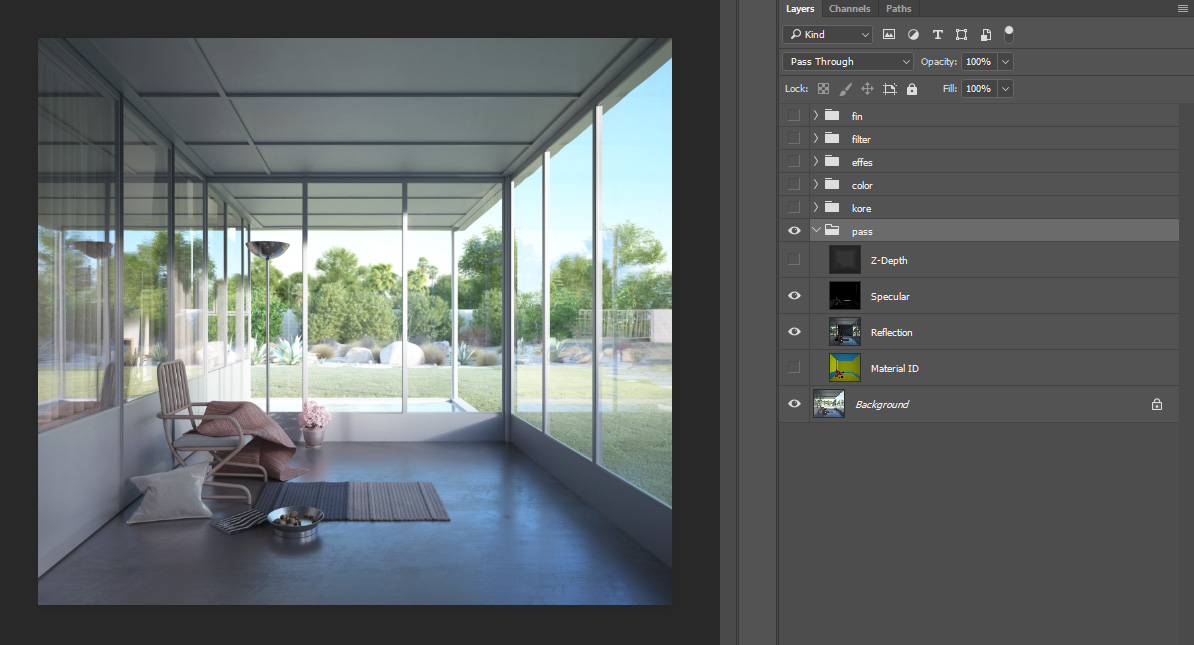
Main exposure and level adjustments.
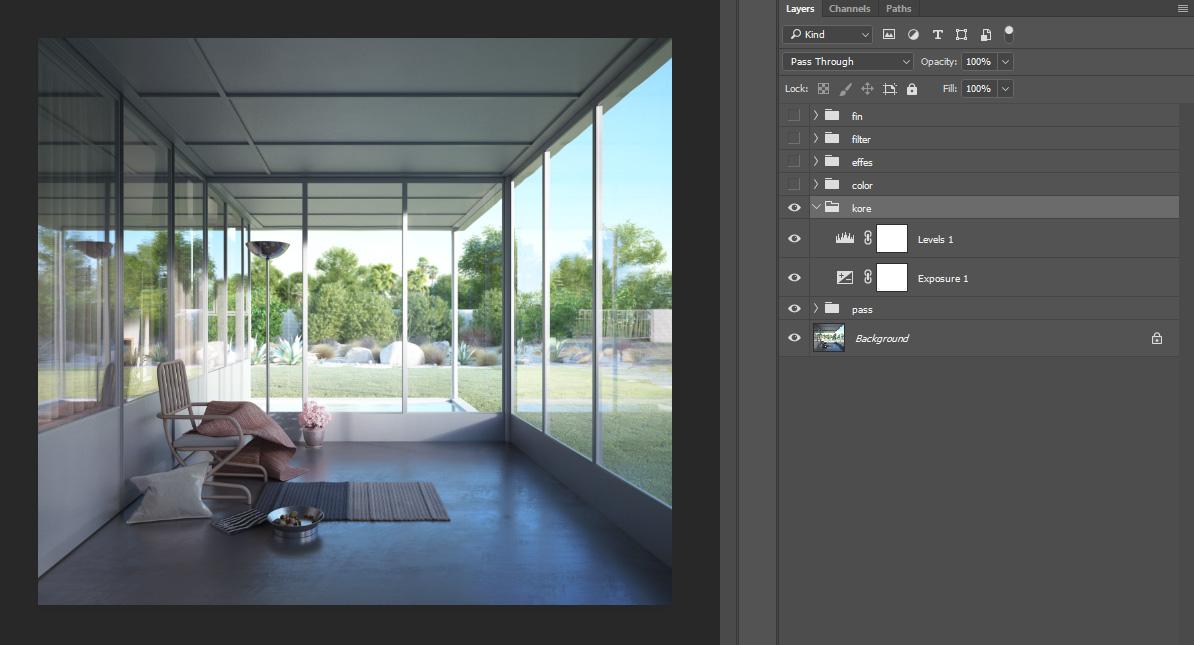
Specific color correction, mainly the yellows and greens.
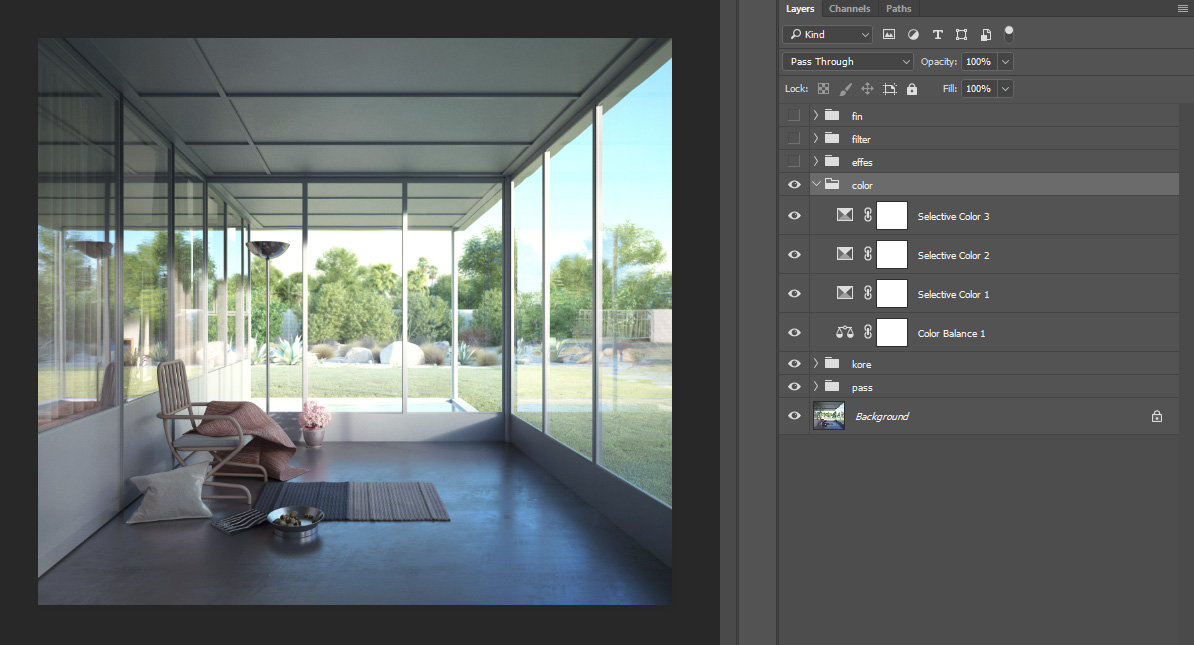
A tiny effect to warm up colors by using a color balance adjustment layer on color dodge mode with 3 percent opacity.
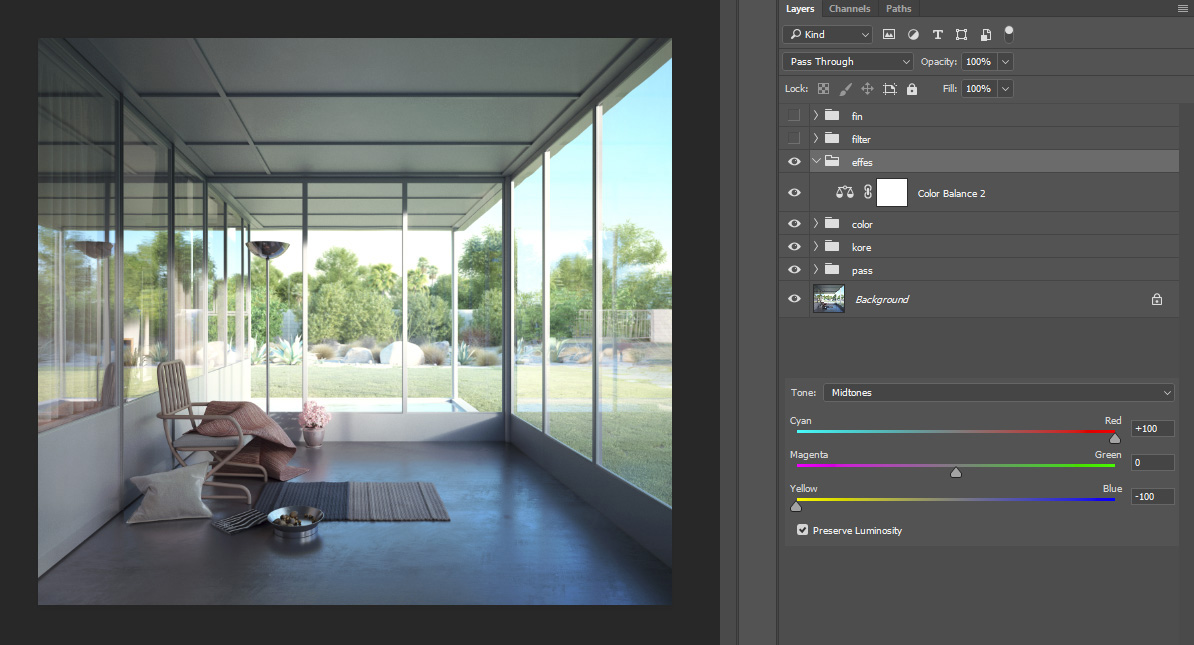
I've used a combination of different luts from James Miller.
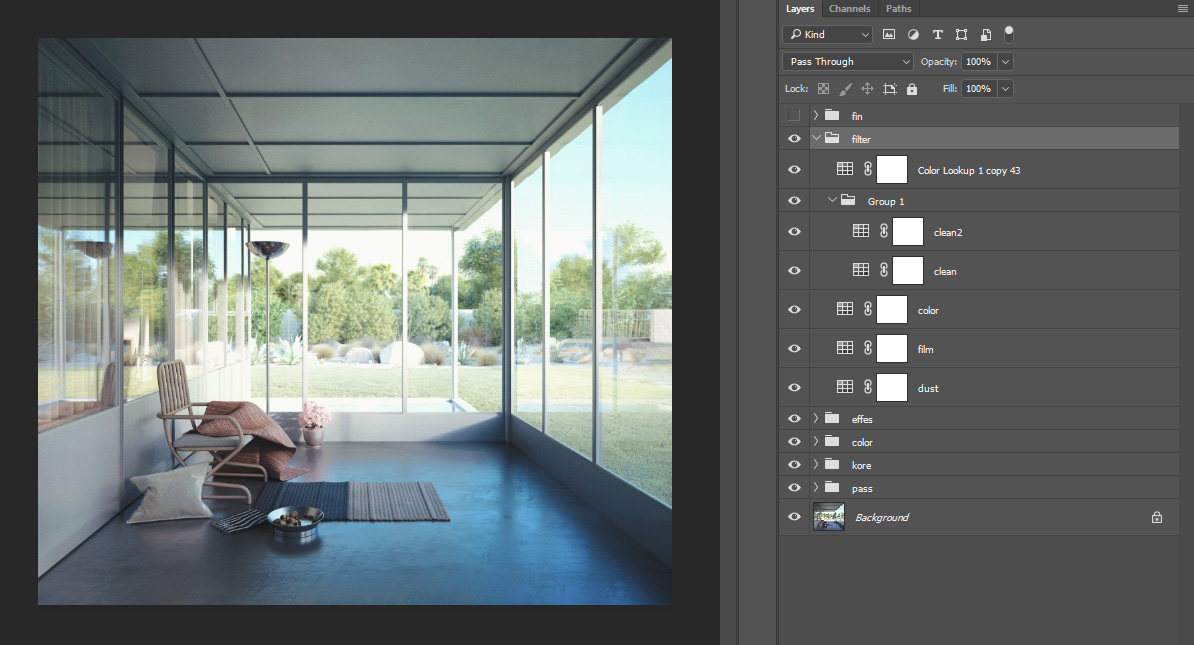
At the end, I usually add lens distortion, chromatic aberration, noise, glow, vignetting, sharpen and an extra tiny bit of scratchy texture to top it off.
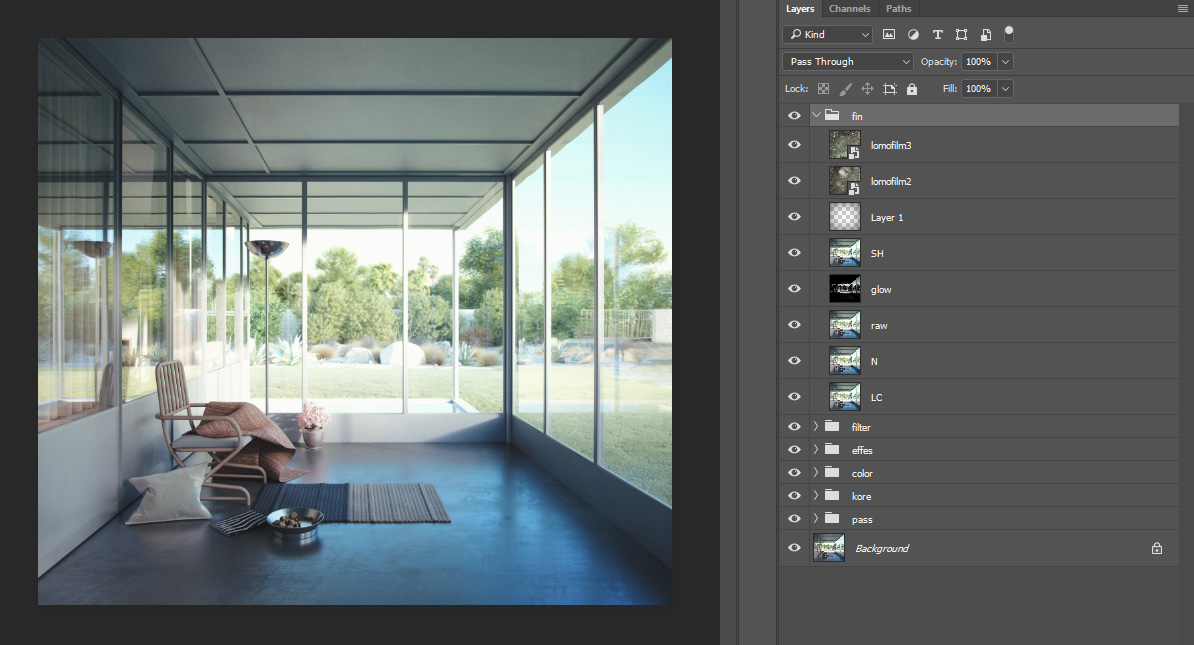
Fin
And that's it, thank for reading to the end :)If I missed something, feel free to ask in the comment section below.
Saludos
These are the final renders guachinarte.com/work/project/miller-house
And some never published outtakes
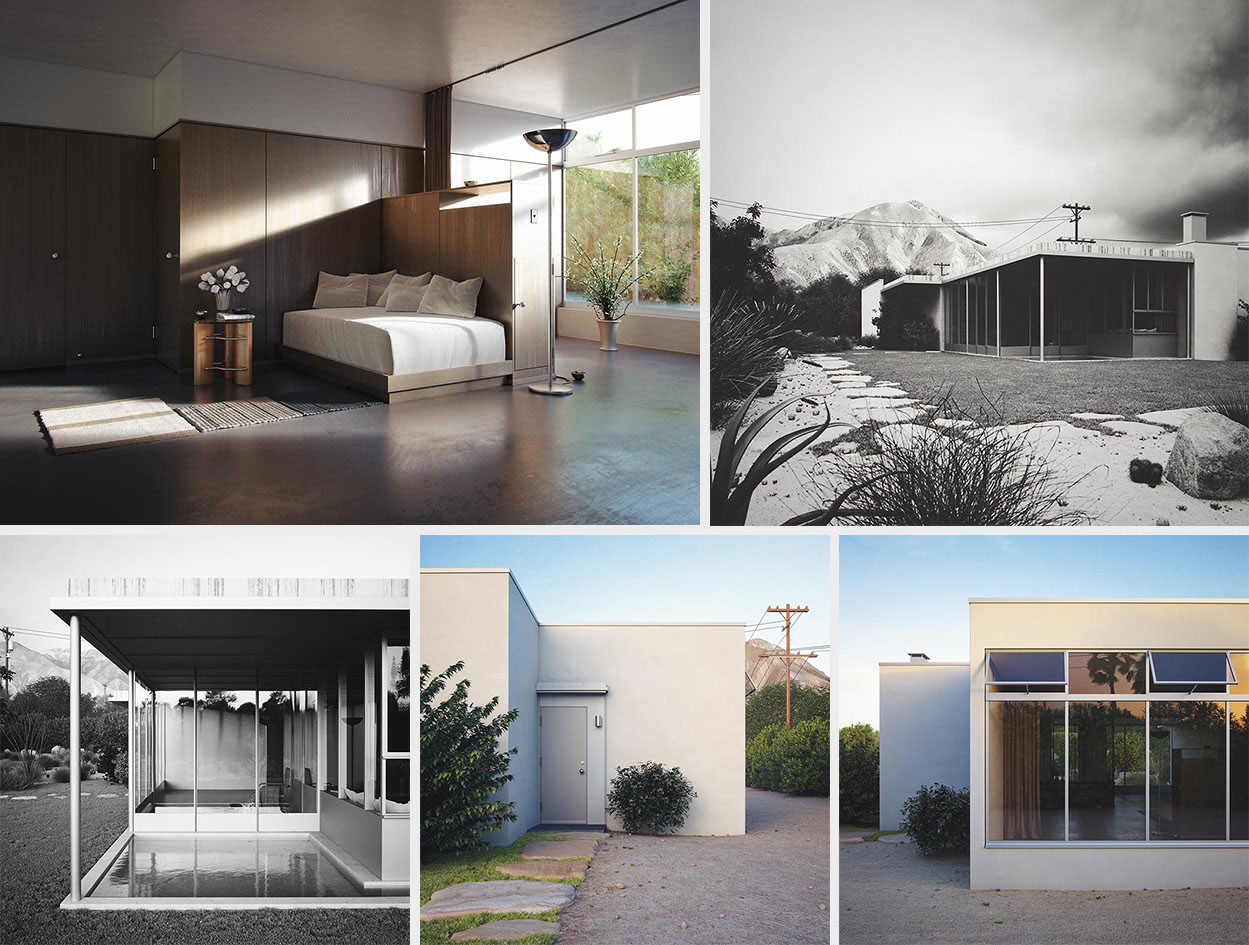
Published: 20/06/2017
Keywords: 3d, Cinema 4D, Color Grading, Composition, Environment, Environment Fog, Filter, HDRI, Lighting, Making of, Materials, Modeling, MoGraph, Multipass, Photoshop, Physical Camera, Post Production, Rendering, Settings, Texturing, Vegetation, Vertex Map, Vray
Comments: Leave a Comment (12 Comments)

Comments
Dome 26/09/2023
Hello Gauchinarte, i am an architecture student in morocco ,and please can i ask you to give me just the plan and 3d of this beautiful house of course if you can,
because i needed for the search of this beautiful house by richard neutra. Thank you
Guachinarte 28/09/2023
Hi! I can't give you the plan because it's not mine (but you should find it online somewhere), the 3d isn't complete, and there is no guarantee of accuracy. But here's the link (I hope it helps): www.guachinarte.com/free/item/miller-house-model
SAFFRE HEBERT 01/04/2022
Hello, I am also an architecture student and I have to make a research of this house - so maybe it's possible for you to sent me the 3d (only if you can)... have a good day
Guachinarte 04/04/2022
Hi, here's the link ;) www.guachinarte.com/free/item/miller-house-model
Sorasit Phiwphong 06/03/2021
Hello, I am also an architecture student. I am working on a thesis on architecture center, which has an exhibition inside.
Inside the exhibition, there are examples of architectural models. Therefore, I would like to request a file of this model to be used in the thesis, if possible, please consider it. thank you.
Guachinarte 10/03/2021
Just sent you an email ;) but, i can only share the pure 3d model, and it only covers the front part of the house. No materials, render or scene setups are included.
trial3553 24/11/2020
Hello, I am also an architecture student and I have to make a research of this house - so maybe it's possible for you to sent me the 3d (only if you can)...thanks in advance :)
Guachinarte 28/11/2020
Just sent you an email ;)
fettah 17/11/2020
Hello Gauchinarte, i am an architecture student in morocco ,and please can i ask you to give me just the plan and 3d of this beautiful house of course if you can,
because i needed for the search of this beautiful house by richard neutra. Thank you
Guachinarte 17/11/2020
Hi Fettah, just sent you an email ;)
Efraín Rodríguez 11/07/2017
Hi, thanks for this tutorial, it's excellent for interior scene. I have some questions about this settings:
1. In the VRay Light section "Area Light", How I disable the box "No decay"?
2. In the section "Ligth Dome" in the texture HDRI should I use a C4D "Filter" like the tutorial of Private Residence?
Thanks again. Have a good day.
Guachinarte 12/07/2017
Hi, you mean the area type, dome? You can't change "No decay" in dome type, it behaves like it should, automatically. Vray takes care of it :)
And, you can use both, c4d filter or vray advbitmap for the hdri. There's no difference in quality, I think. But you don't have to care about color profile if you use it in a vray advbitmap, so I would suggest using vray advbitmap, it's easier.